
|
|
|
テーマ:鉄道(21920)
カテゴリ:鉄道旅の記録
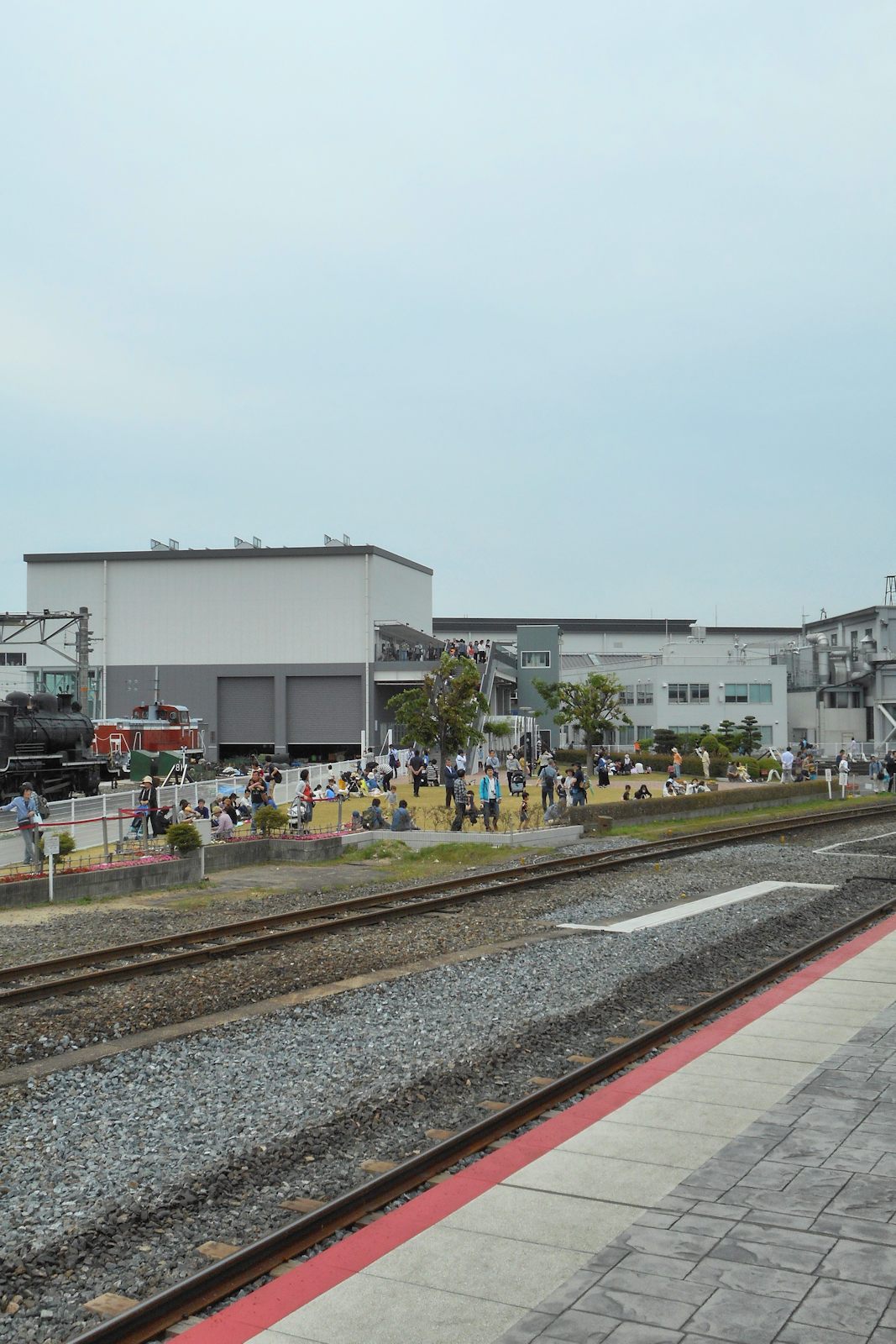 5月3日、旅の最終日の楽しみは、開業したばかりの京都鉄道博物館。 2016(平成28)年4月29日、それまでの梅小路蒸気機関車館をリニューアル、大阪・弁天町にあった交通科学博物館を統合する形で開業した京都鉄道博物館は、京都貨物(梅小路)駅に隣接し、東海道本線(JR京都線)と山陰本線(嵯峨野線)のデルタ線に囲まれた梅小路公園の一角にある。 通常の開館時刻は10:00であるが、大型連休中は1時間早い9:00の開館で、開業したばかりということもあってか、早くから多くの人々が並んでいた。 ゲートを通って最初に出迎えてくれた車両は、プロムナードに展示されているC62形蒸気機関車、80系電車、そして0系新幹線という、国鉄時代に東海道本線・東海道新幹線を走り抜けた車両達である。 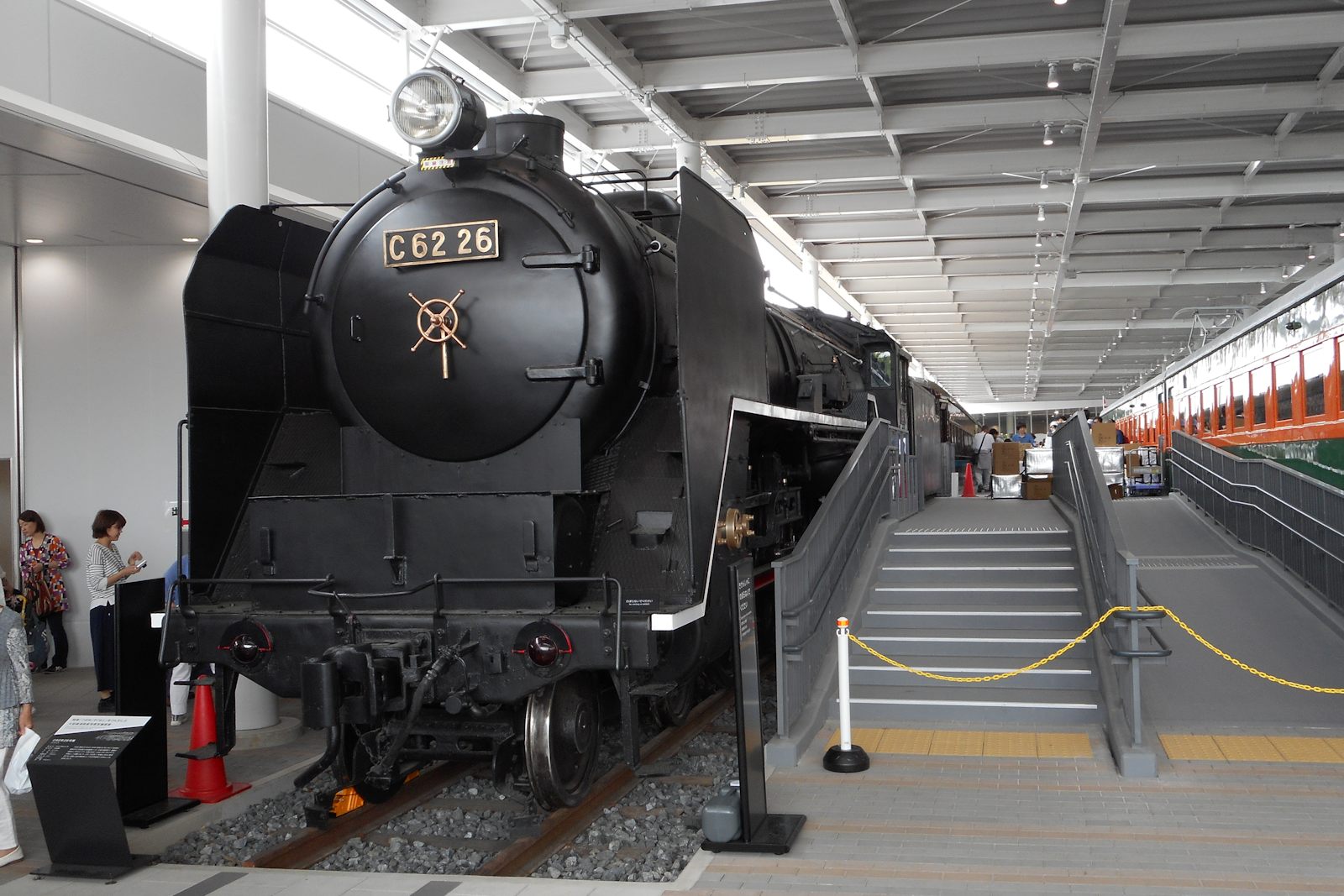 「シロクニ」ことC62形蒸気機関車は、東海道本線東京駅~大阪駅間を8時間で走り抜けた伝説の列車「つばめ」を牽引したことで知られ、1954(昭和29)年には日本の蒸気機関車の最高速度129km/hを記録した(最高速度を出した17号機は名古屋のリニア・鉄道館に保存されている)。アニメの主題歌が山陽新幹線主要駅の発車メロディに採用された松本零士先生の漫画「銀河鉄道999」に登場する999号のモデルとしても知られる。 C62形蒸気機関車の後ろにはスハ32系客車のマロネフ59形寝台車とスシ28形食堂車が連結されていた。 マロネフ59形客車は、上段レール方向、下段枕木方向にベッドが向けられたプルマン式の寝台車。元々は直宮家(天皇陛下の兄弟もしくは子女およびその家族)専用の1等・2等合造寝台車で、マイロネフ37290形と名乗った。後年スイロネフ38形→スイロネ37形→マイロネフ38形と改名し、1960(昭和35)年の、現在の普通車・グリーン車の区分けに繋がる2等級制導入による1等車廃止によりマロネフ59形に改名した。 スシ28形食堂車は、元々は食堂車と2等座席車(現在のグリーン車)の合造車スロシ38000形として製造された。後にスロシ38形に改名し、一時期食堂機能を停止させた上で3等座席車(現在の普通車)スハシ38に改造された。廃車後、交通科学博物館に展示されることにあたり、全面食堂車に改造され、スシ28形の形式が与えられた。 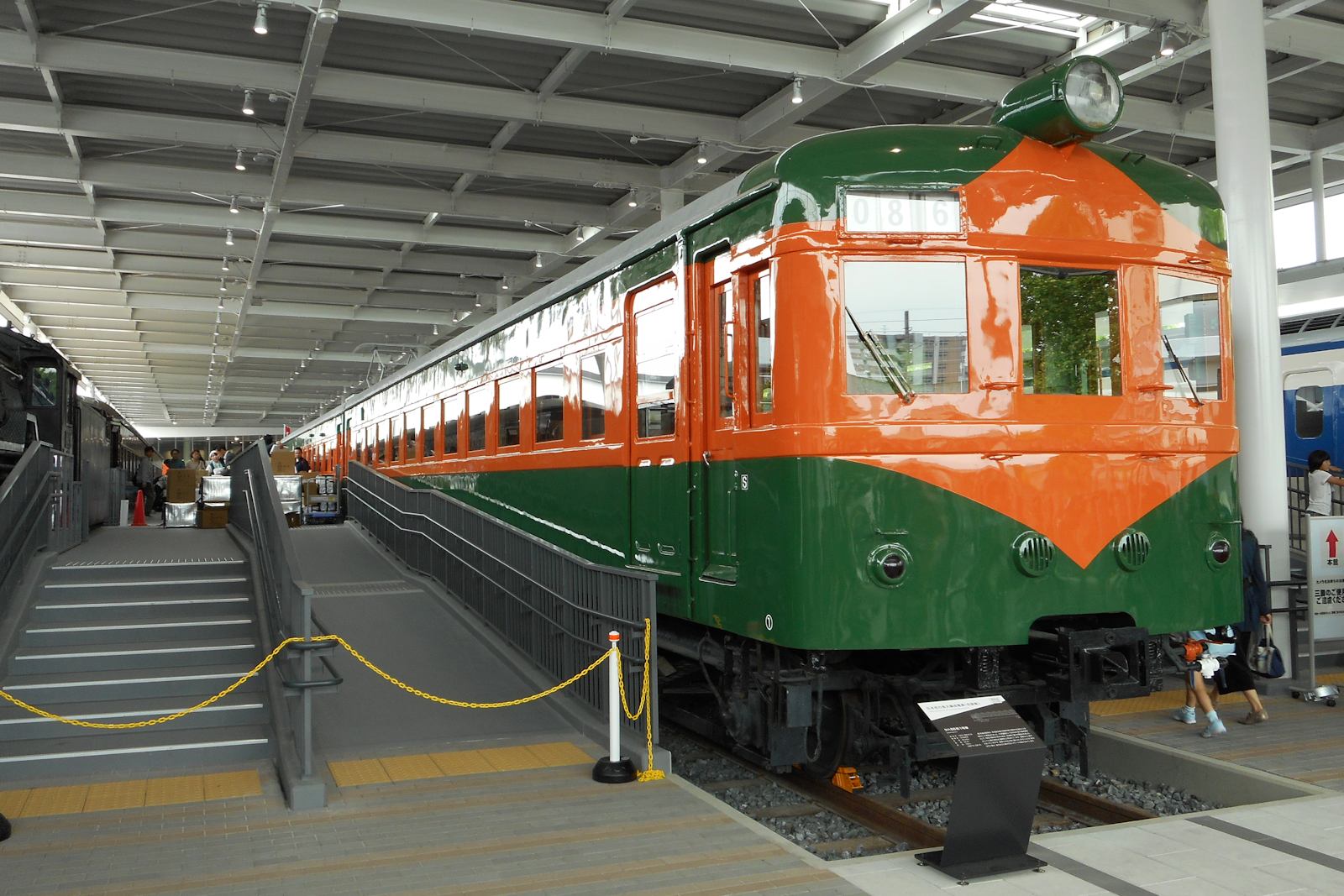 初代「湘南電車」の80系は1950(昭和25)年に、東海道本線東京駅~熱海駅・沼津駅間の中距離近郊列車として登場した。それまでの電車が、揺れが酷く、モーターの重さでレールを痛め付けるため、中距離・長距離列車には適さないとされていた常識を打ち破り、その後の電化区間の拡大に大きく貢献した。 展示されている車両は3枚窓の初期型で、後年製造された車両は折妻2枚窓に変更された。この後期型の前面が「湘南顔」と呼ばれ、東急初代5000系や京王3000系の前面デザインの参考となった。 ちなみにオレンジ色(黄かん色1号)と濃緑色(緑2号)の組み合わせは、関東地方では「ミカン」に例えられるが、関西地方では「カボチャ」と呼ばれるそうである。 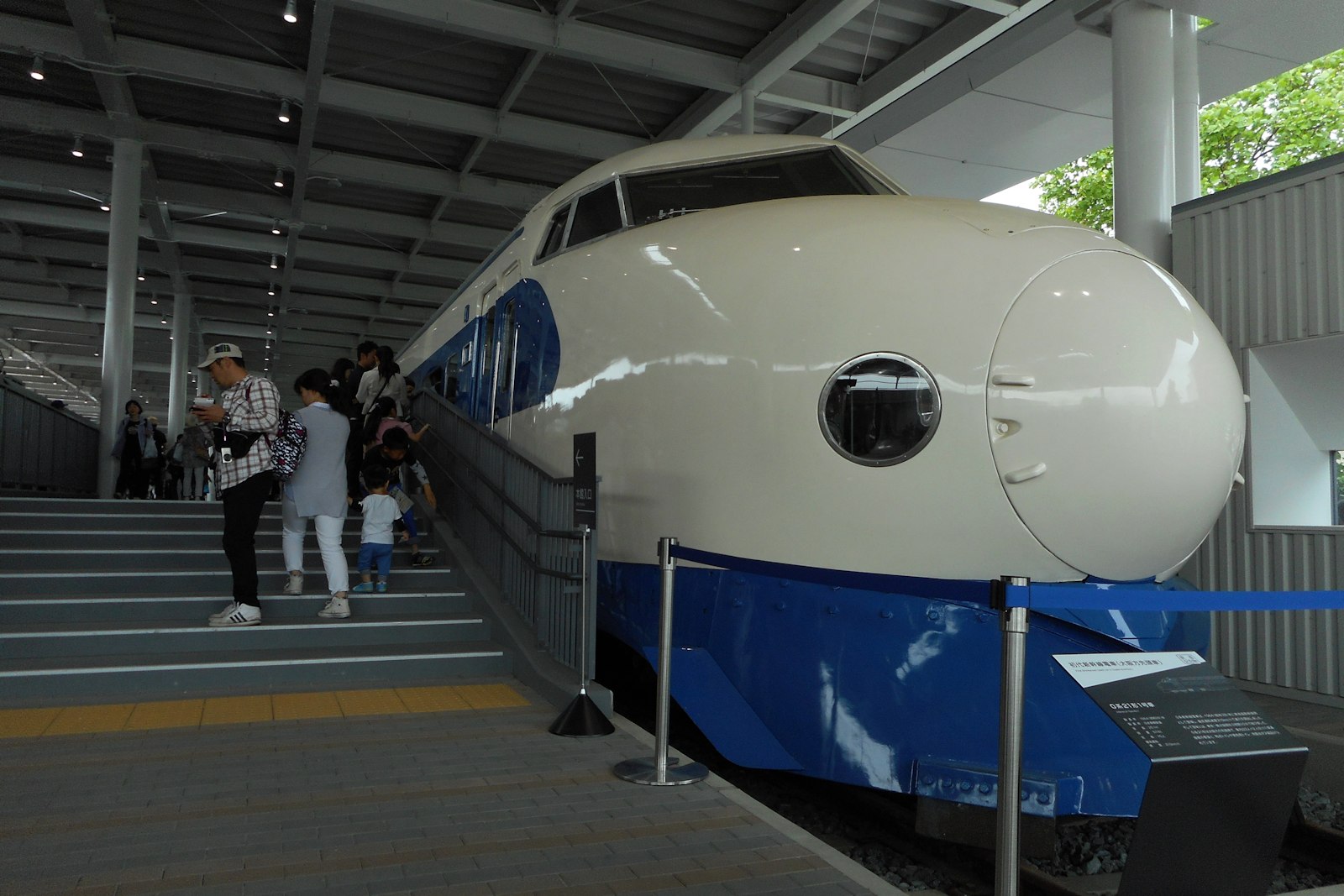 0系新幹線は言わずと知れた1964(昭和39)年に登場した東海道新幹線の初代車両。展示車両は両先頭車とグリーン車、ビュッフェ車の4両。2008(平成20)年までの長きに渡って活躍した。ここ以外にも多くの鉄道博物館で展示・保存されている。独特の丸みを持った団子鼻が、引退後も根強い人気を誇っている。 80系電車とマロネフ59形・スシ28形客車は中に入れないことから、窓越しに車内を見る。0系新幹線も1両を除いて中に入ることができない。中に入れる車両には、新幹線の車両模型、パンタグラフや座席の実物が展示されていた。 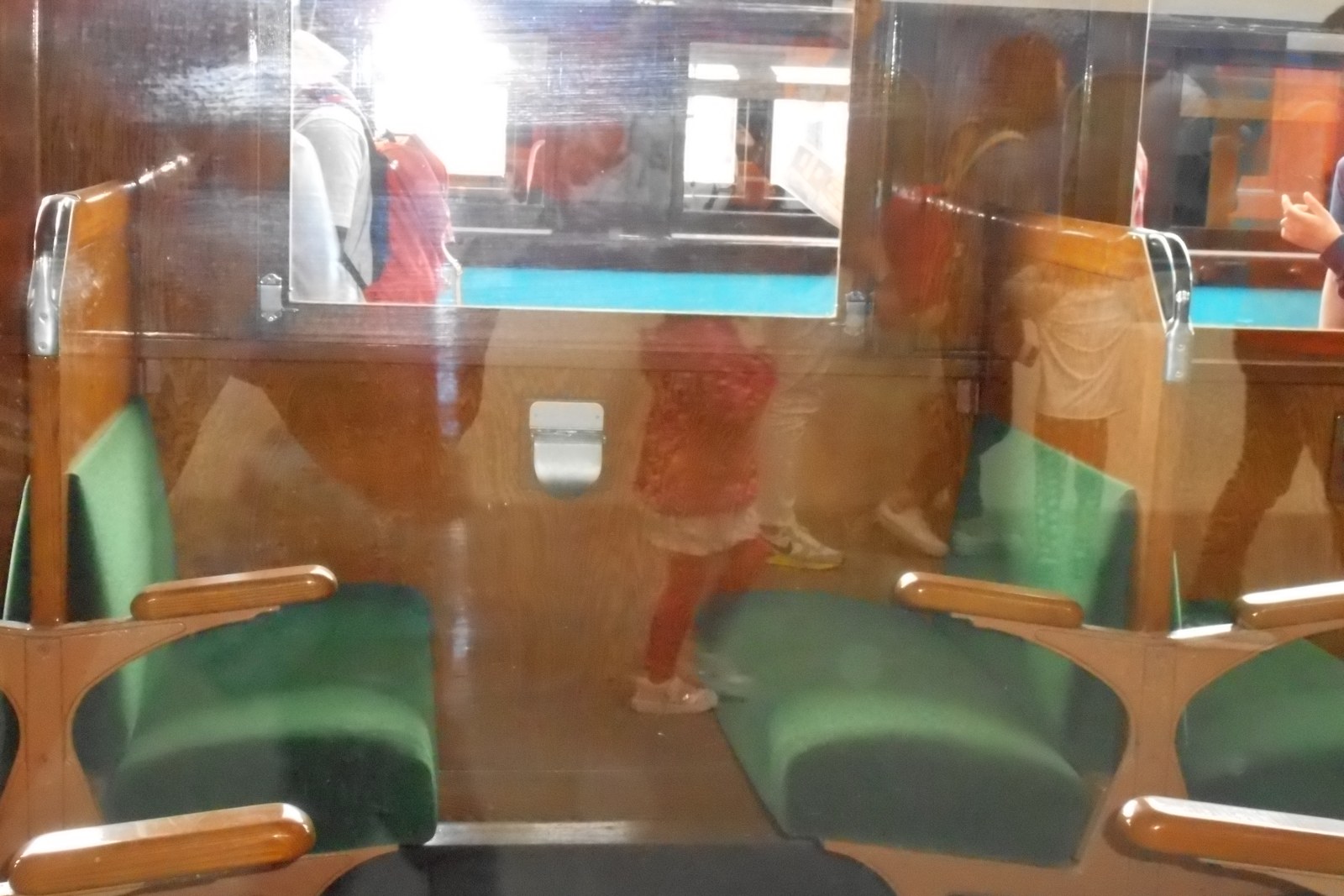 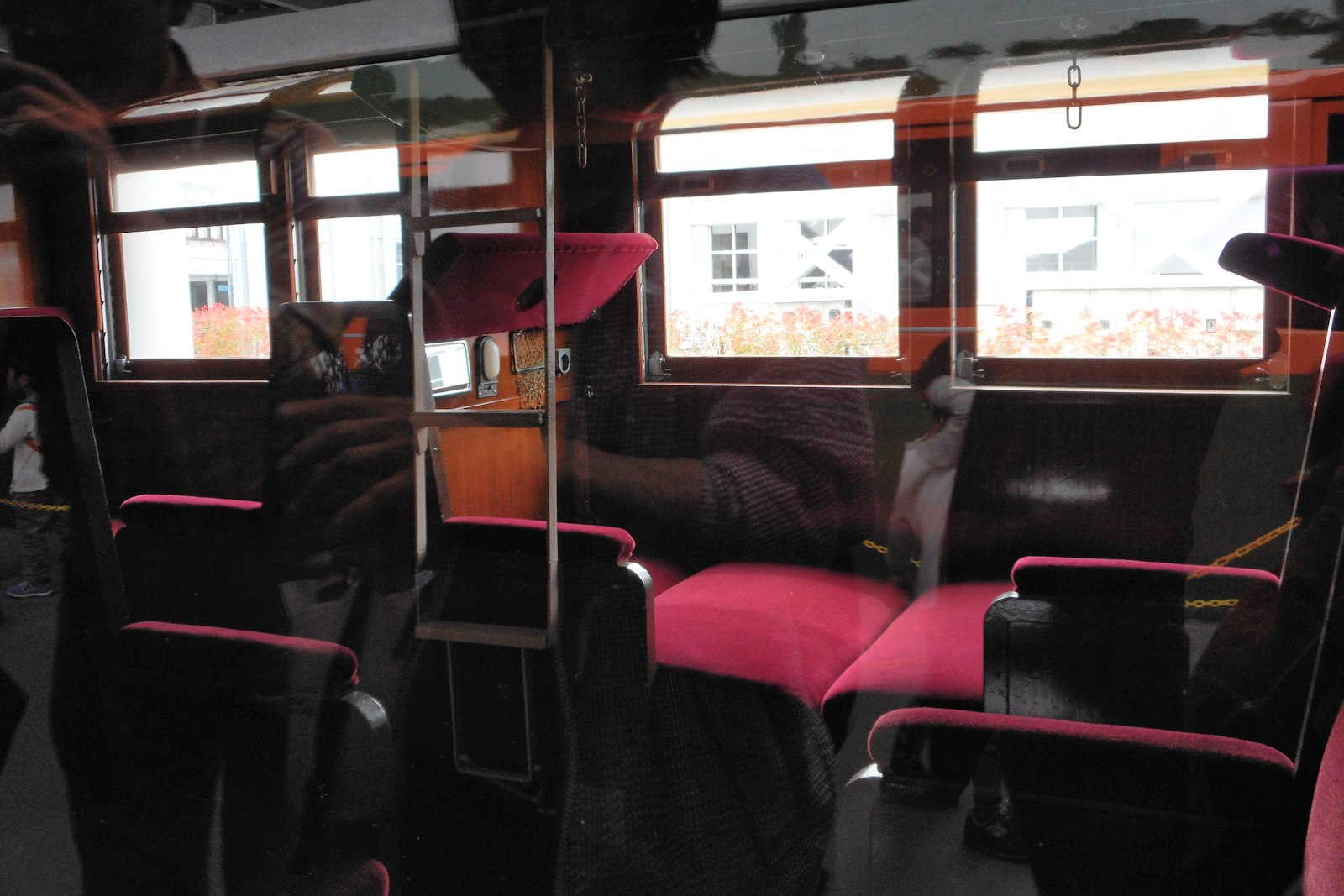 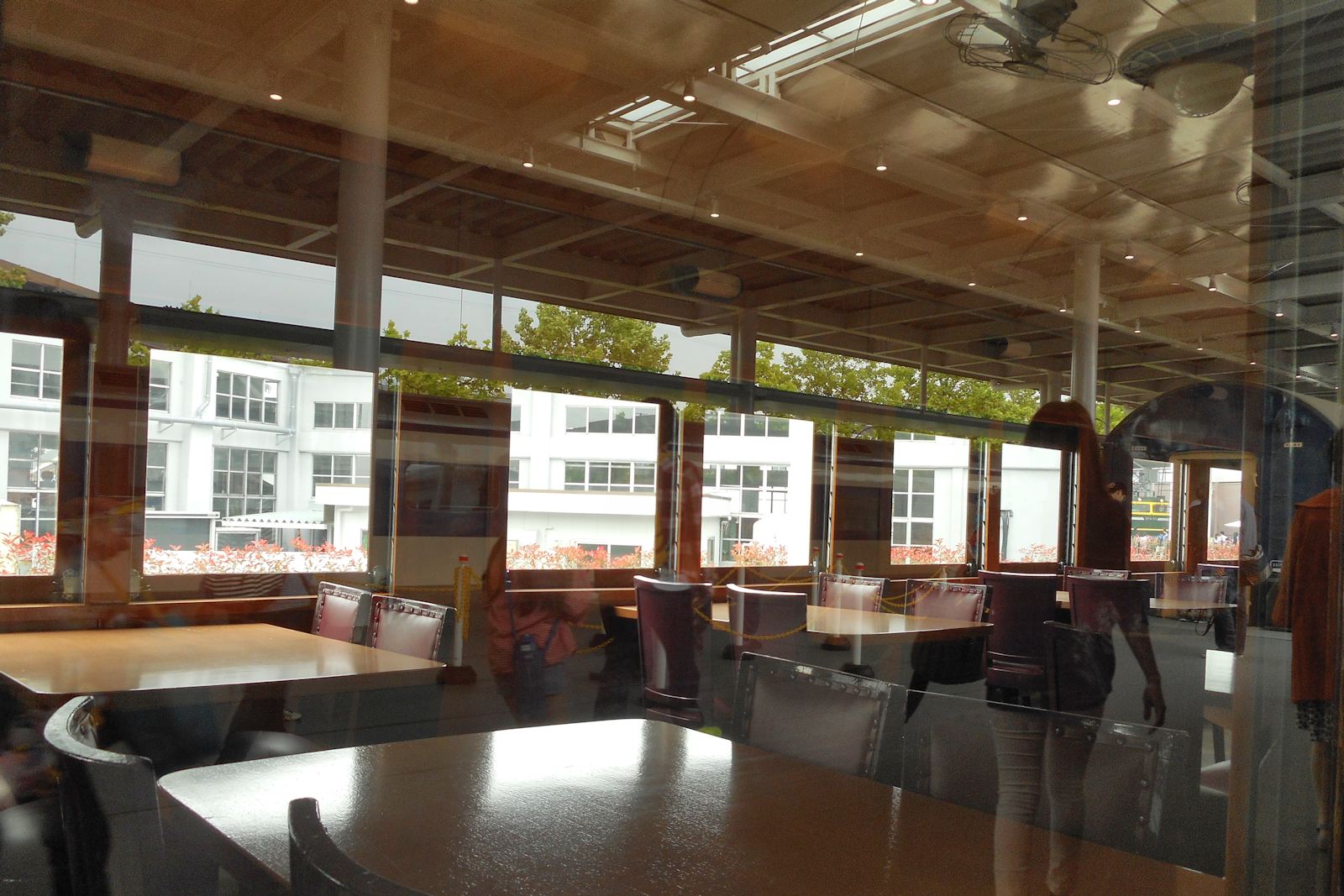 その奥には、103系のクハ103-1号車が展示されている。こちらは車内に入ることができる。 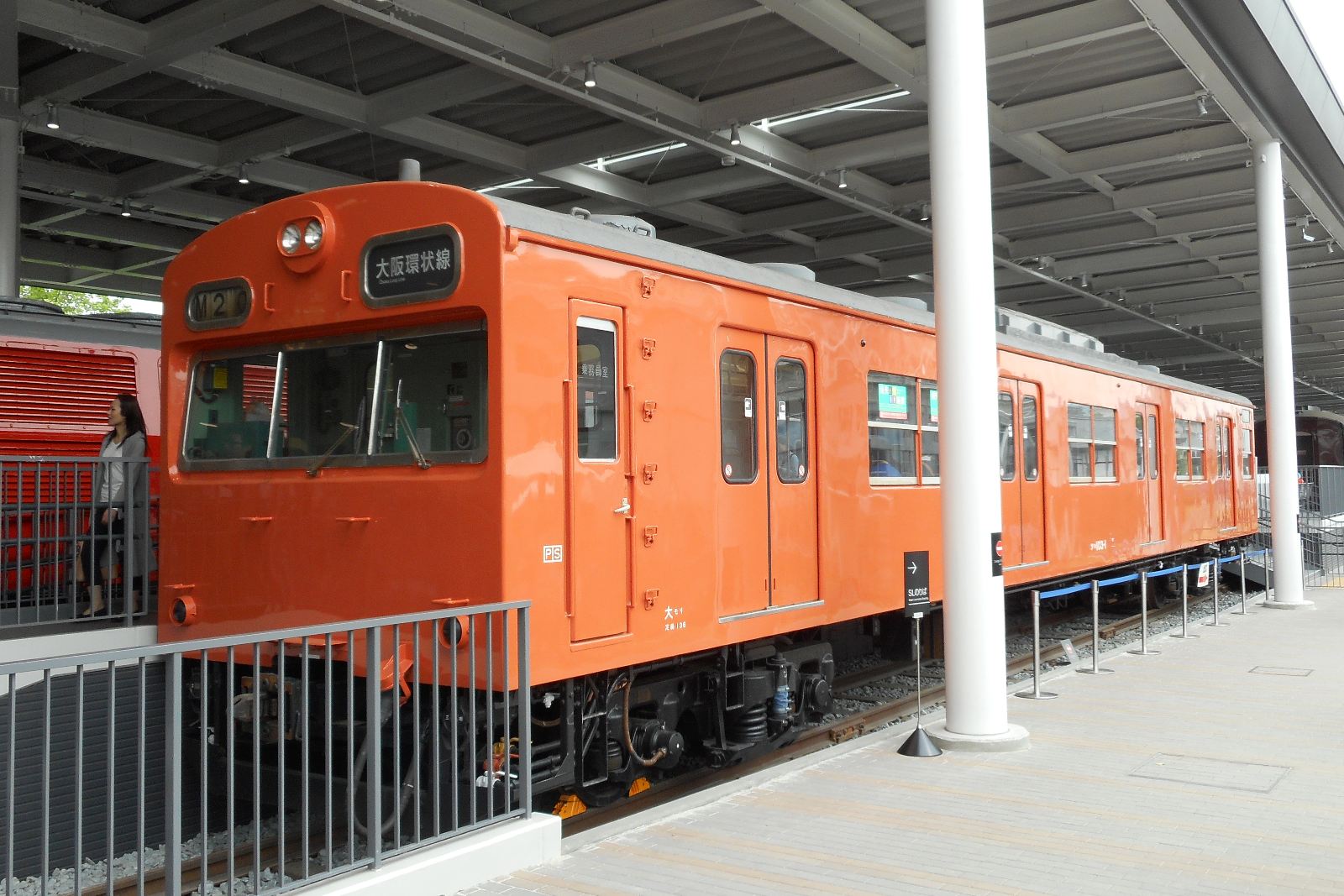 国鉄時代の1963(昭和38)年に山手線用として登場した103系の記念すべき第1編成の先頭車として製造された同車であるが、展示決定前は日根野電車区(現在の吹田総合車両所日根野支所)に所属し、2011(平成23)年まで阪和線で運用されていた。現在は阪和線時代のスカイブルー(青22号)から展示用に大阪環状線のオレンジバーミリオン(朱色1号)に塗装しなおされ、内装もJR西日本仕様にリニューアルされている。 続いて本館に入ると、左に500系新幹線、583系電車、489系電車が並び、右に230形蒸気機関車が展示されていた。 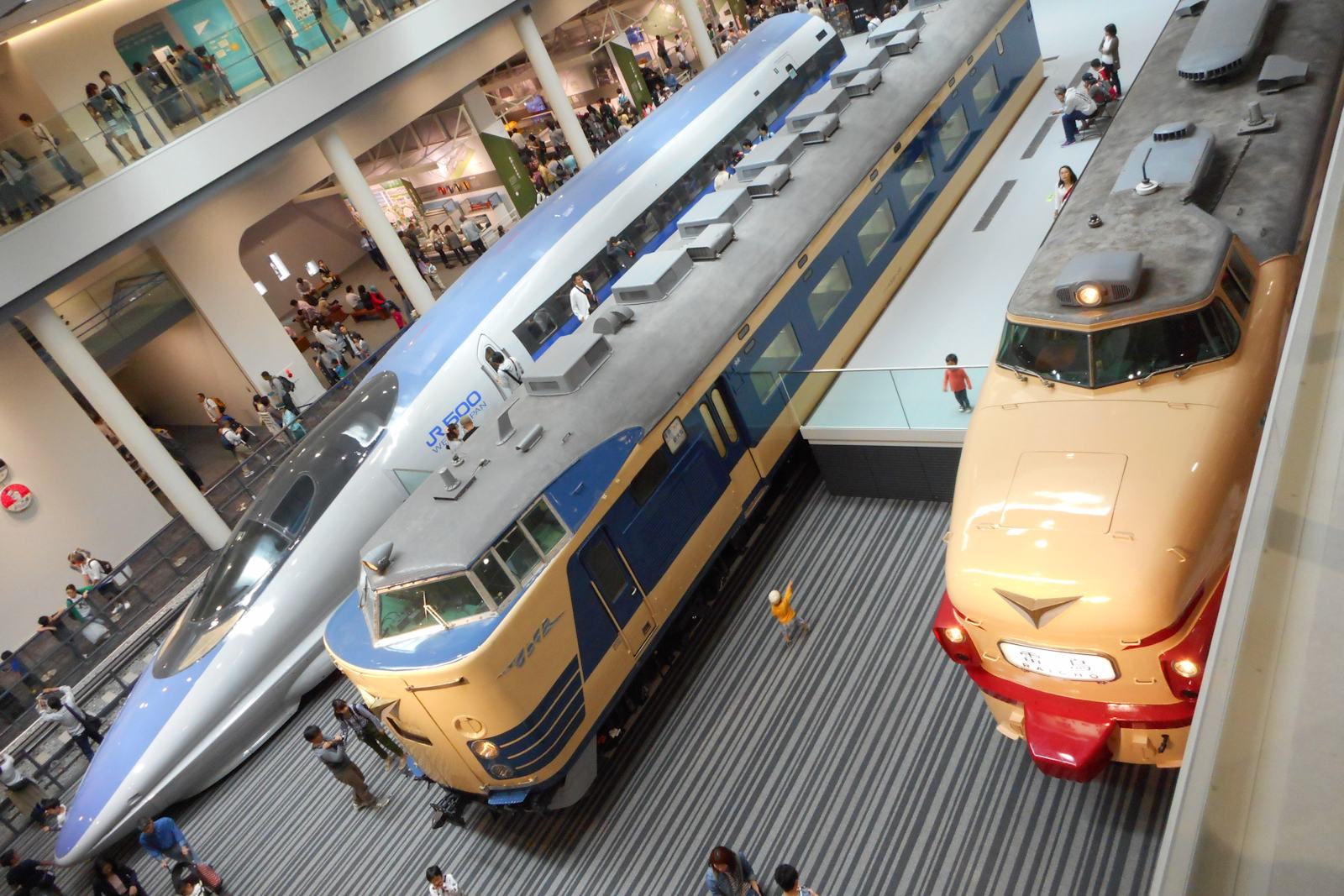 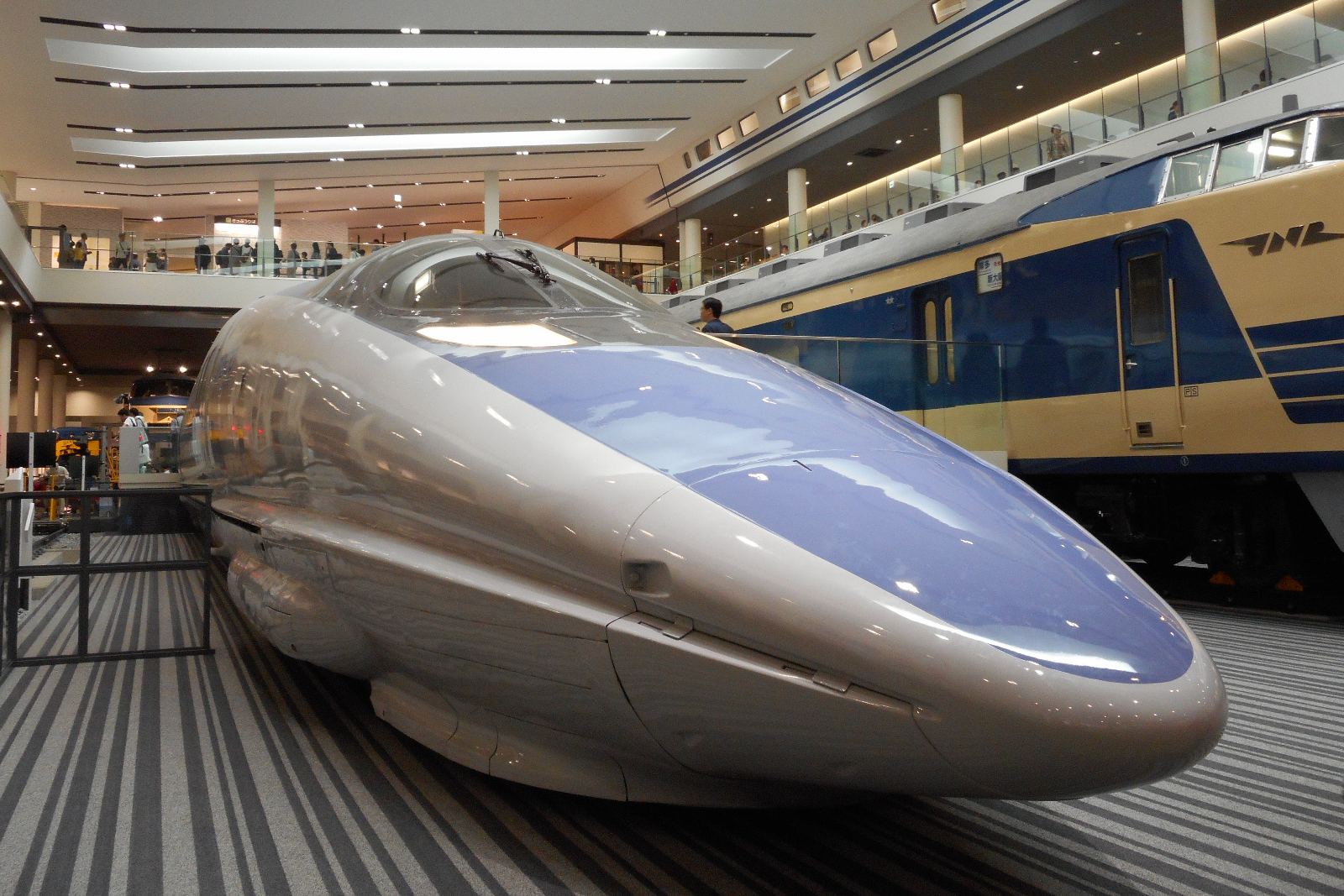 日本初の300km/h運転を実現させた500系新幹線は、1997(平成9)年に登場。500系で運行された「のぞみ」の東京駅~博多駅間の所要時間は5時間を切った。車両デザインはドイツ人デザイナーのアレキサンダー・ノイマイスターさんによるもので、先の鋭い前面と丸い断面の車体が特徴。 後継のN700系新幹線の登場により、「のぞみ」運用からは撤退したものの、8両編成に短縮された上で、今も新大阪駅~博多駅間の「こだま」運用で現役の車両がいる。  共に国鉄時代に多くの特急列車として活躍した583系電車と489系電車は、直流・50Hz交流・60Hz交流すべての電気に対応した特急型電車として全国を駆け巡った。583系電車は2012(平成24)年まで急行「きたぐに」として、489系電車は2010(平成22)年まで急行「能登」として活躍した。 583系は世界初の座席・寝台兼用車両として登場した。昼間はボックスシートで「はつかり」「みちのく」「雷鳥」など、夜間は3段寝台で「月光」「ゆうづる」「はくつる」などで活躍した。 一方の489系は、485系を信越本線の横川駅~軽井沢駅間をEF63形電気機関車と連結・協調して碓氷峠越えを可能にした仕様に改良された車両。主に上野駅~金沢駅間の特急「白山」(信越本線経由)、「はくたか」(上越線経由)や上野駅~直江津駅間の特急「あさま」で活躍した。  国産初の蒸気機関車である230形蒸気機関車は1902(明治35)年に登場した。同型の車両が高野鉄道(現在の南海高野線)、東上鉄道(現在の東武東上線)などでも活躍した。展示されている233号機は1903(明治36)年に製造されたもので、2004(平成16)年に鉄道記念物、2007(平成19)年に機械遺産、2016(平成26)年に重要文化財に指定された。 500系新幹線の左側に目を向けると、壁には18の国鉄・JRの列車のヘッドマークが並べて飾られていた。 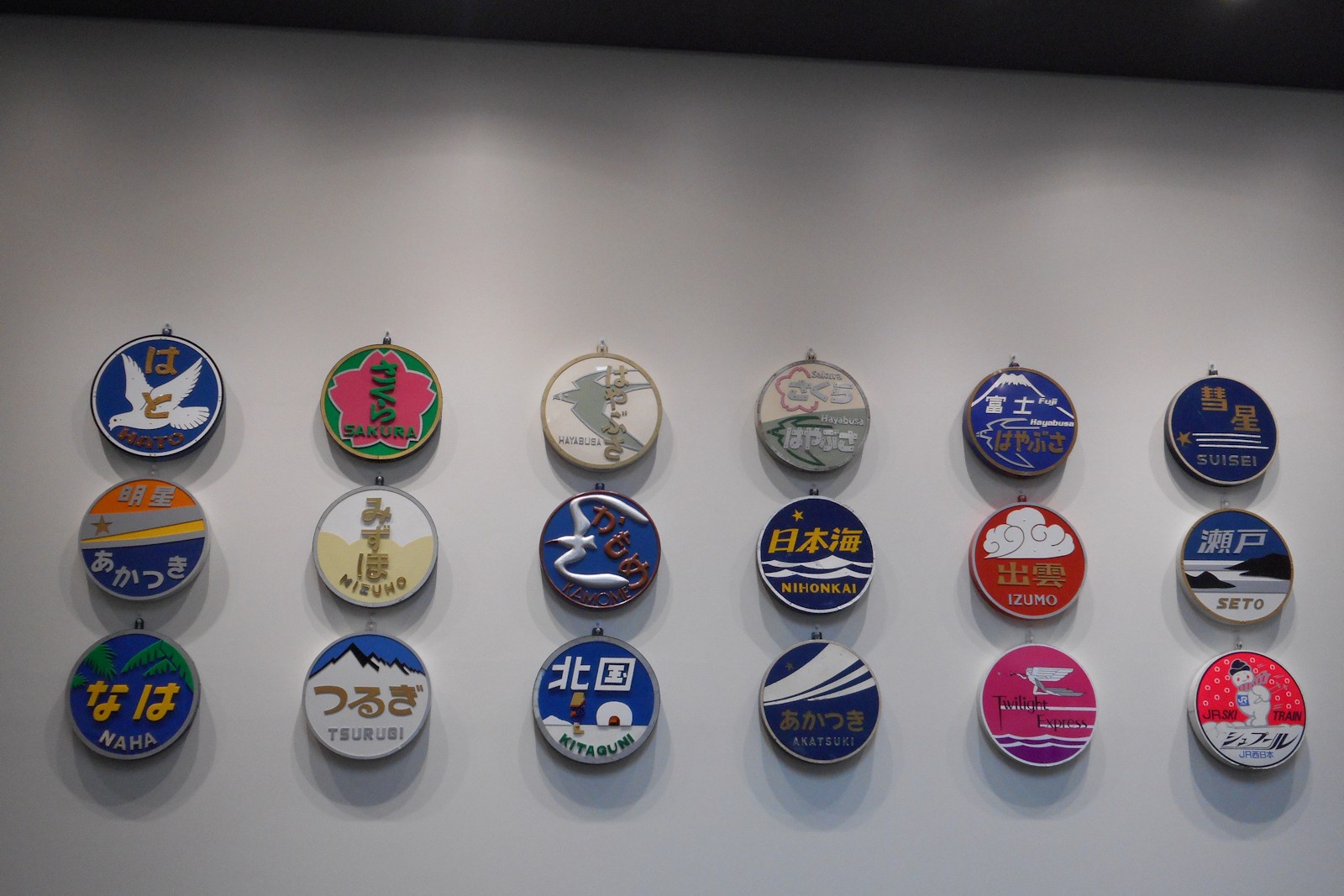 その奥にはEF66形電気機関車、DD51形ディーゼル機関車、キハ81系気動車、100系新幹線が展示されていた。 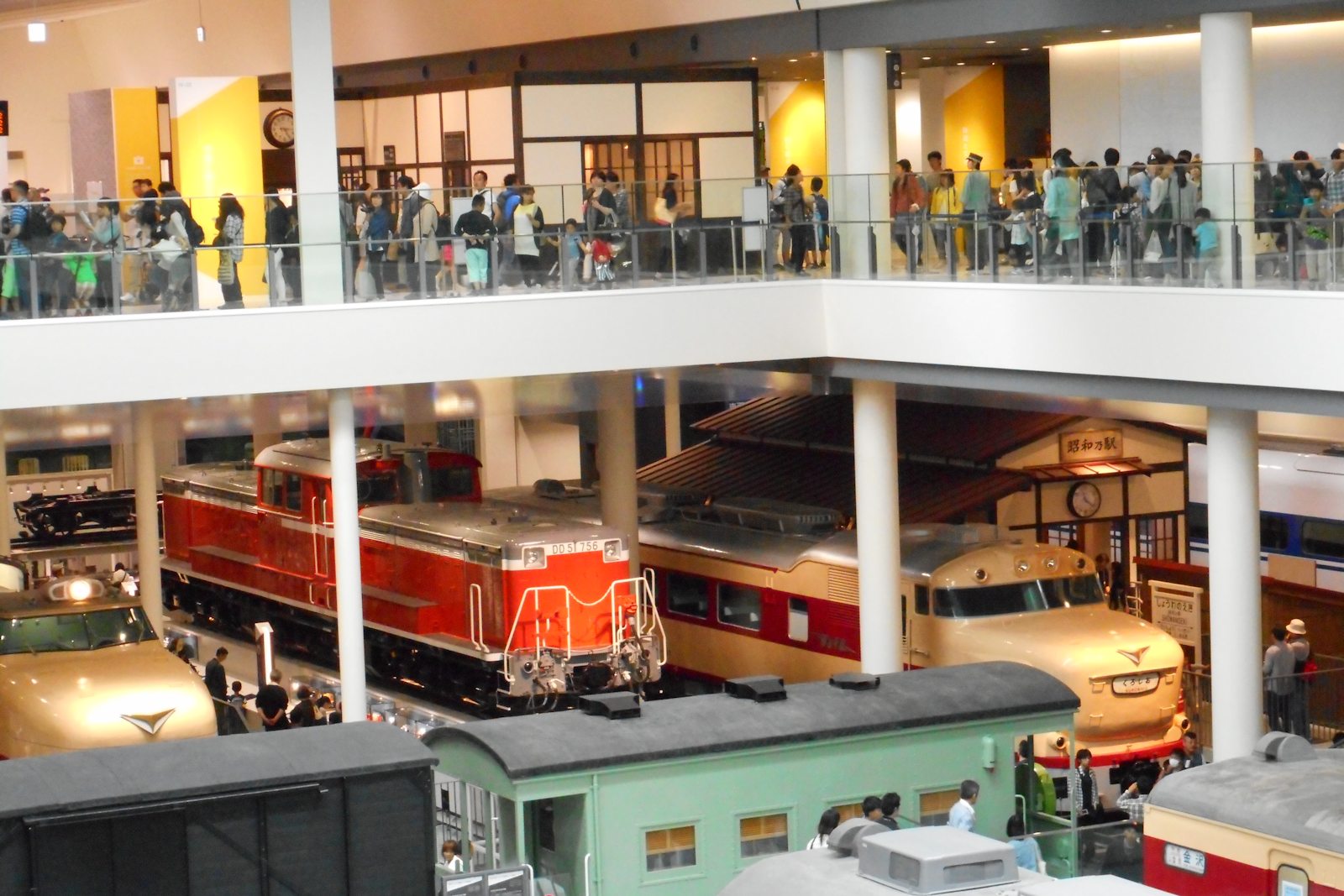 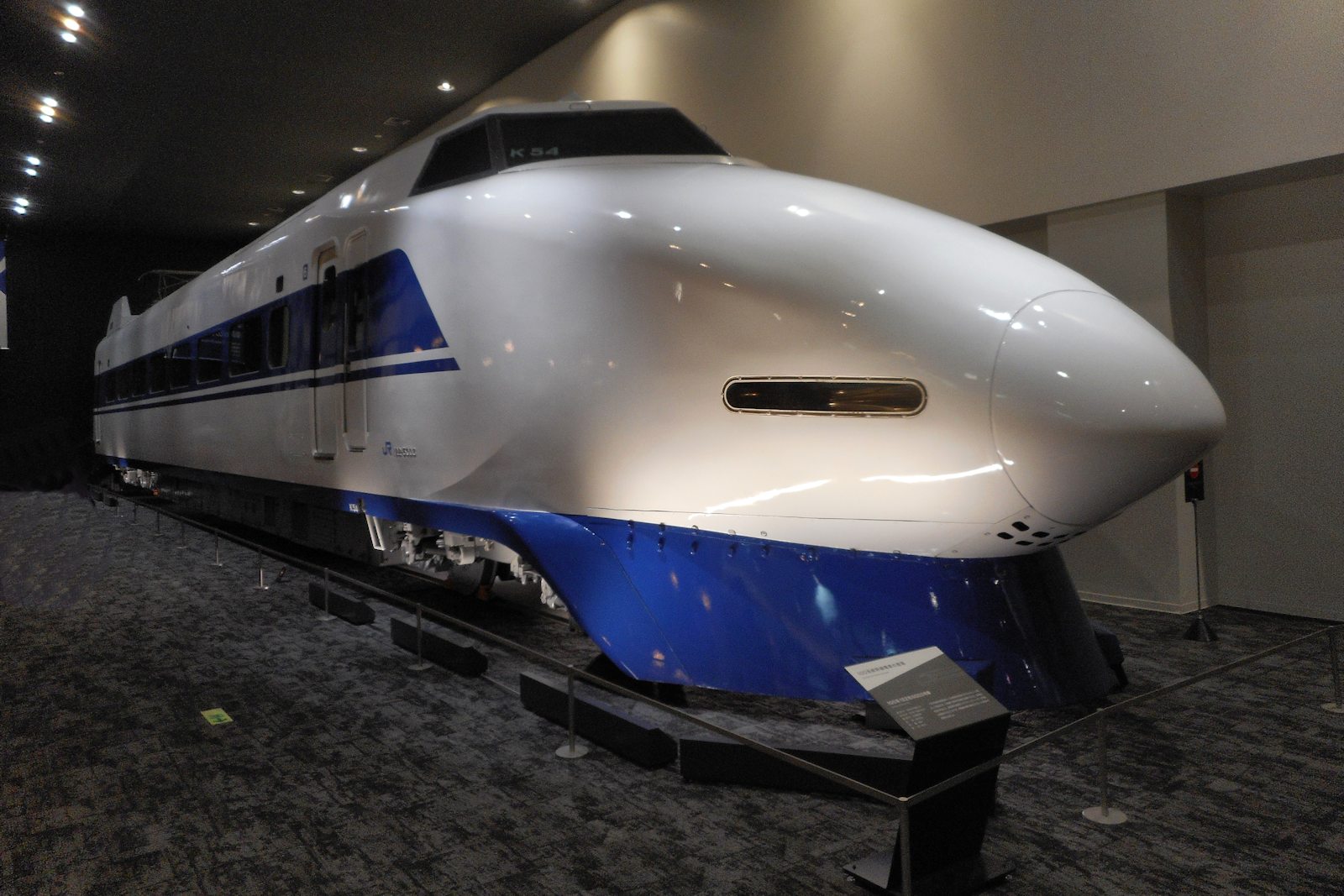 100系新幹線は1985(昭和60)年に登場した0系に次ぐ東海道・山陽新幹線の車両。0系よりもシャープな前面デザイン、2階建て車両の連結、0系よりも10km/h速い230km/h運転の実現という、1980~1990年代の新幹線のイメージアップに貢献した。特にJR西日本に所属した2階建て車両を4両連結した編成の人気は高かった。300系以降の270km/h運転に対応した車両が登場すると次第に見劣りし始め、16両編成から6両もしくは4両編成に短縮され、2012(平成24)年まで活躍した。 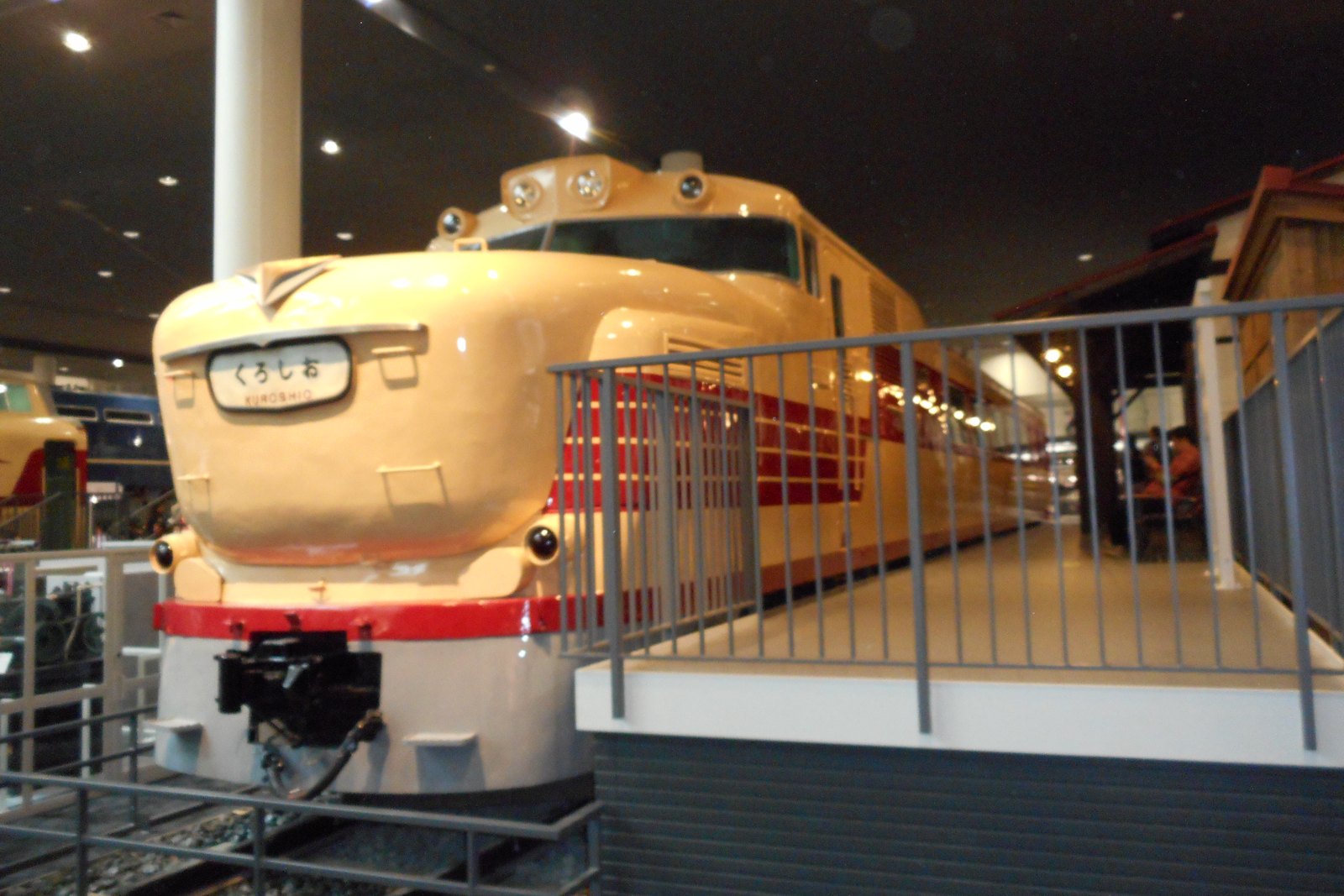 キハ81系気動車は1960(昭和35)年に、当時常磐線・東北本線経由で上野駅~青森駅間を結んだ特急「はつかり」としてデビューした国鉄初の特急型気動車。鉄道ファンからは「ブルドッグ」という愛称で呼ばれる、151系や485・489系とは違う、どこか愛嬌のあるデザインのボンネットが特徴である。 デビュー早々からエンジントラブルが相次ぎ、果ては火災事故を起こし、当時の新聞に「はつかり、がっかり、事故ばっかり」と揶揄されたほどだった。そんな不運なスタートだった同車であったが、反省点が後継のキハ82系、キハ181系気動車へと受け継がれ、非電化路線における特急列車の進化に貢献した。 現在では京都鉄道博物館でしかその姿を見ることができない大変貴重な存在である。僕が京都鉄道博物館で見たかった車両の1つである。 キハ81系気動車と同じ本館1階奥寄りに展示されているDD51形ディーゼル機関車とEF66形電気機関車は床下からも車両を見て来た。  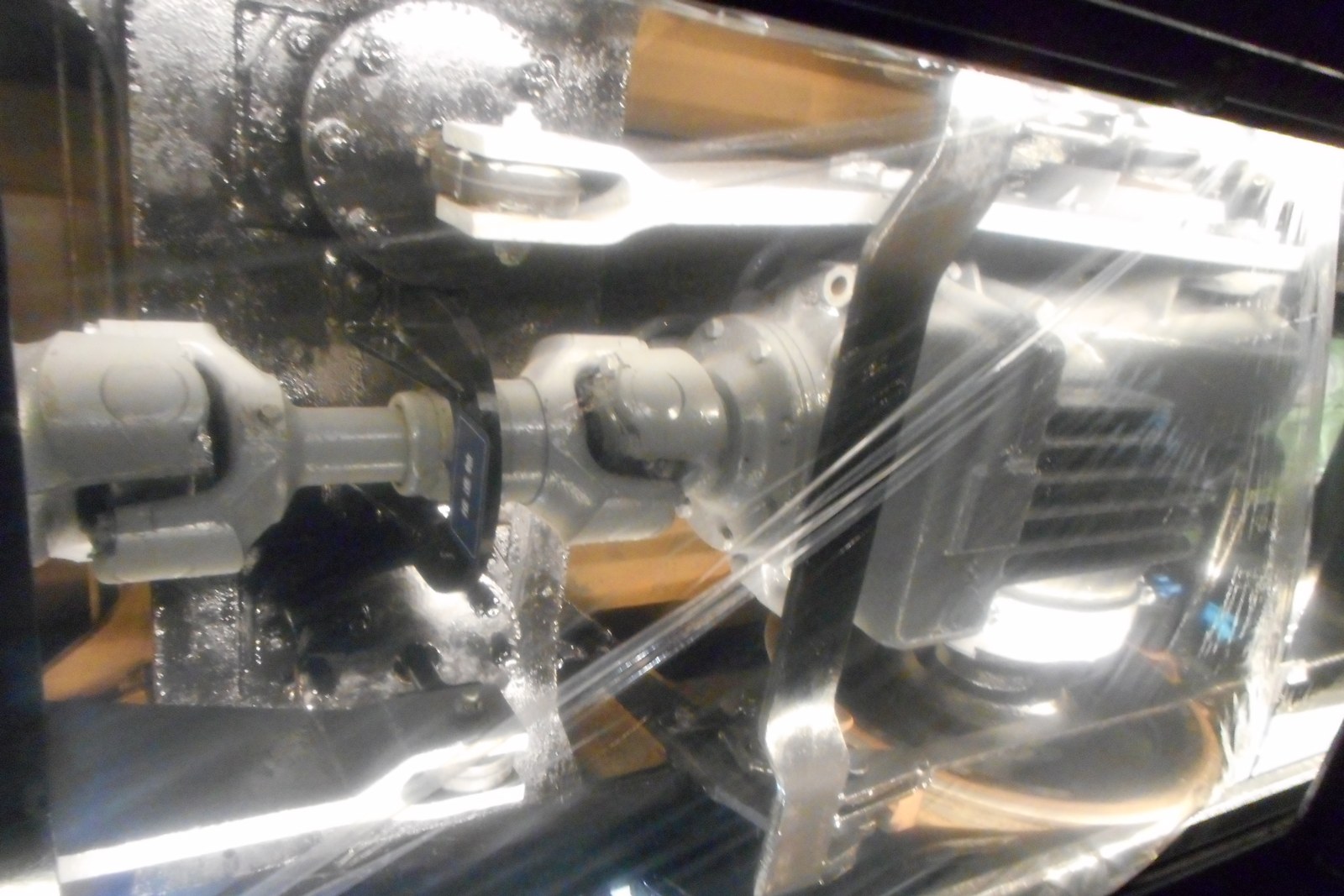  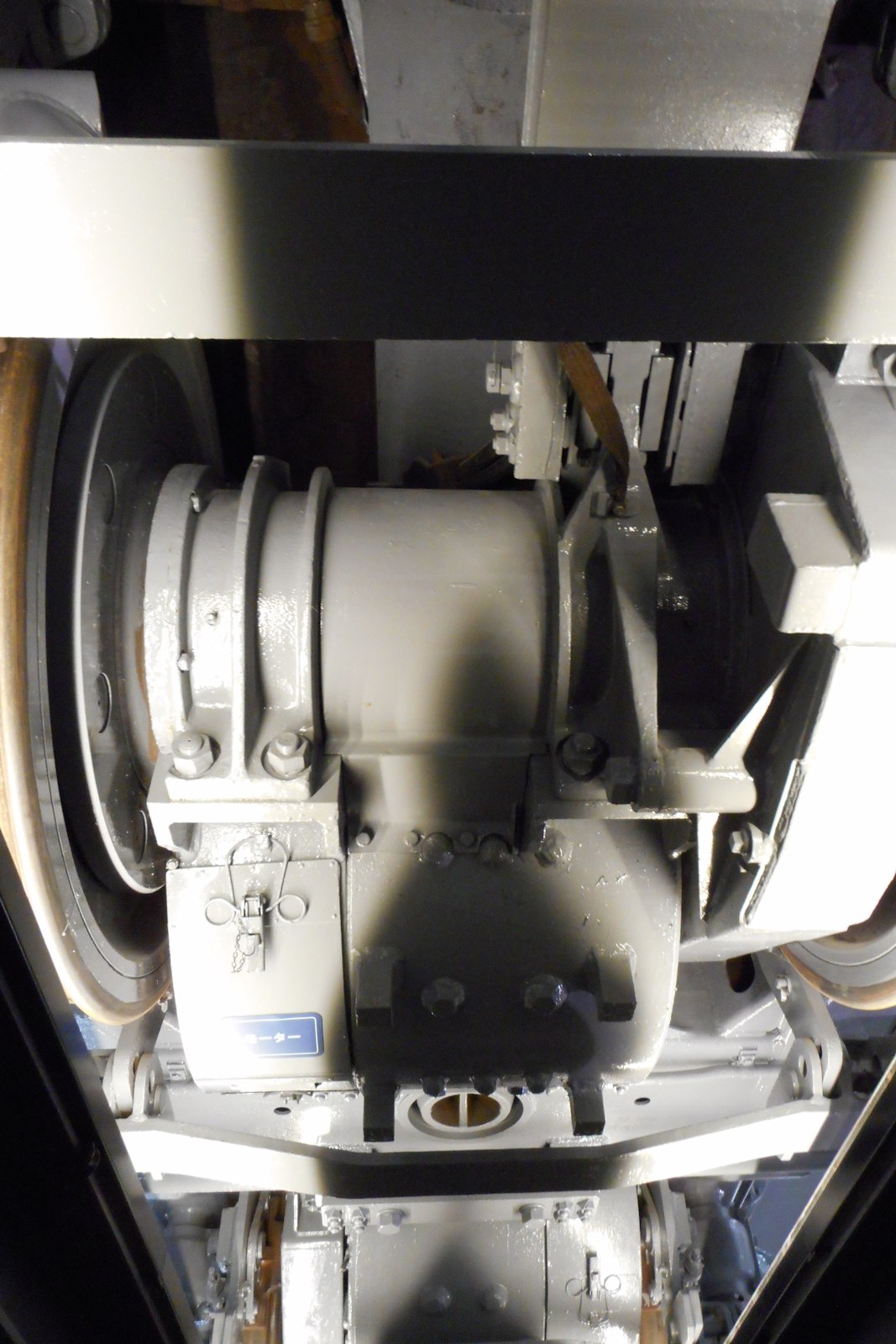 続いて本館2階へ。 2階の見どころは、大型のHOゲージ模型ジオラマであろう。 ジオラマには館内に展示されている車両、JR西日本の人気車両はもちろんのこと、JR西日本以外の車両も走っていた。 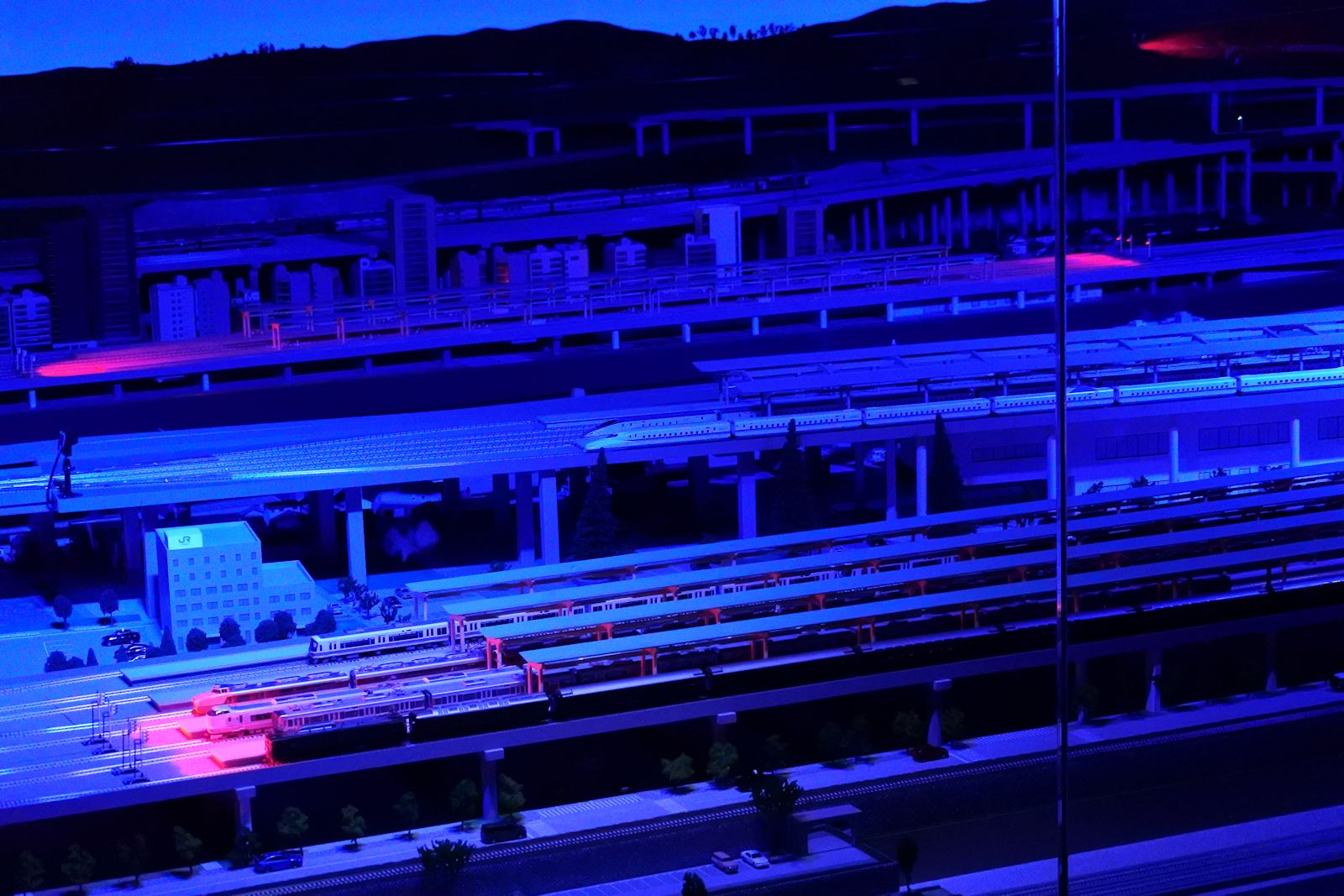 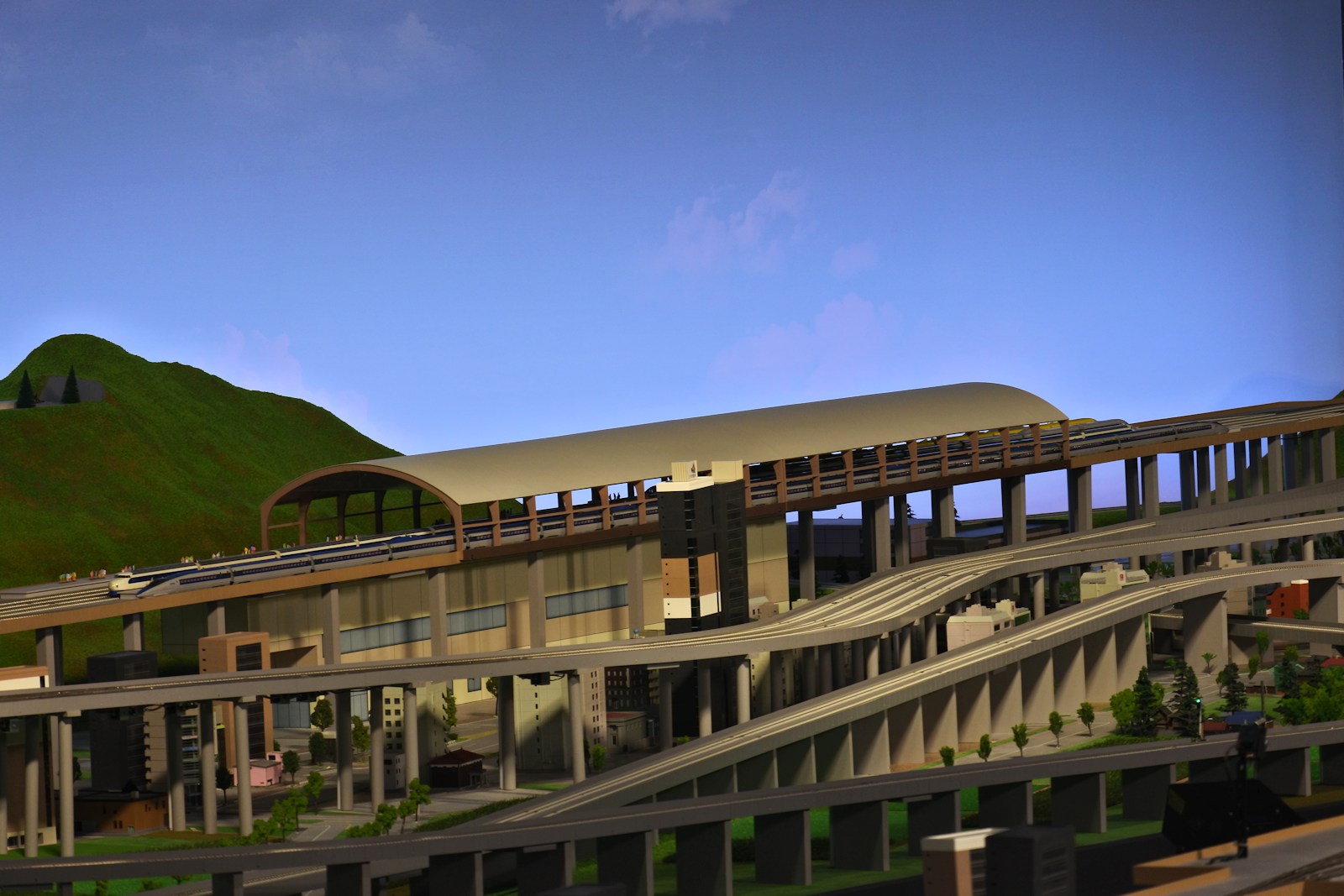 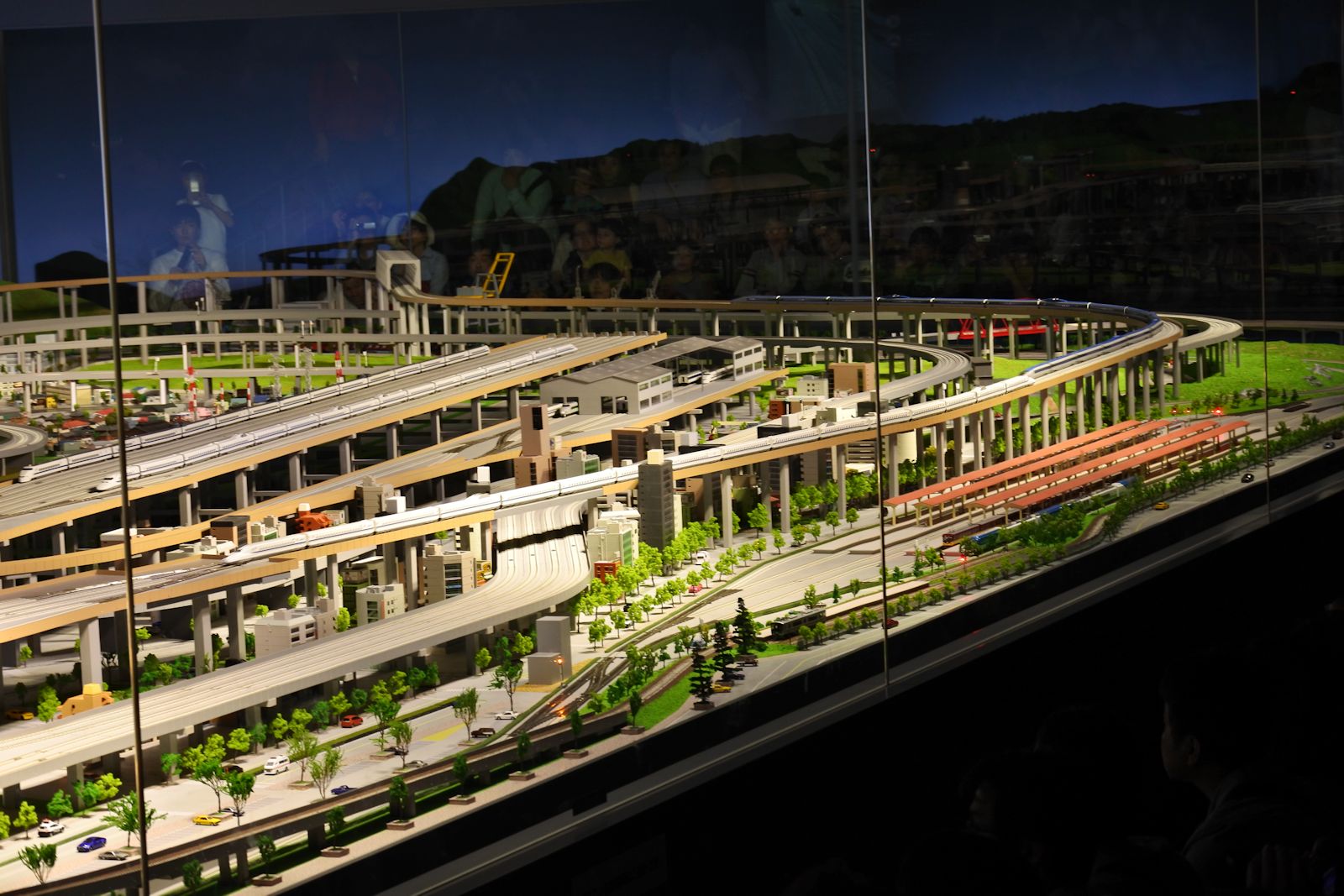  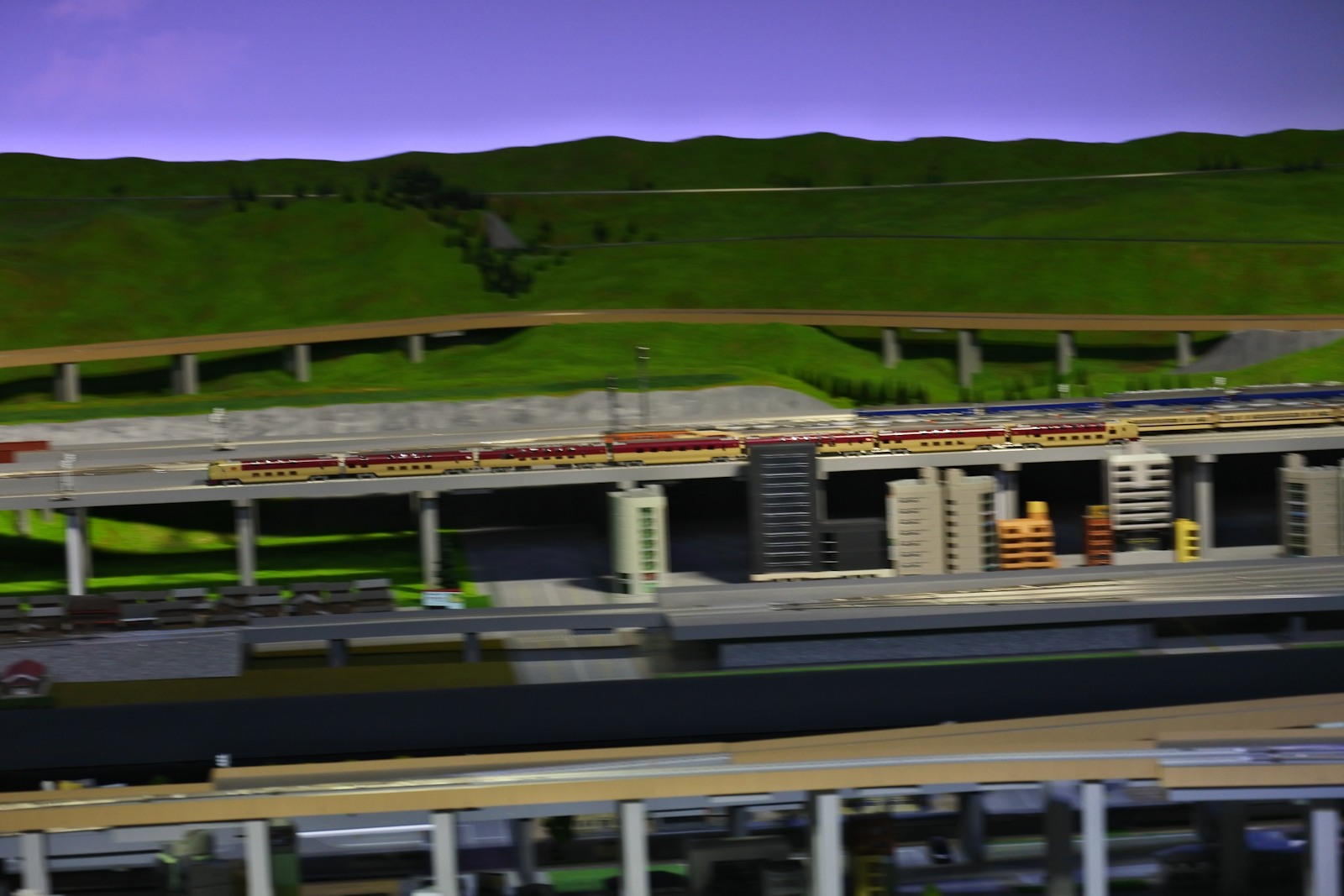 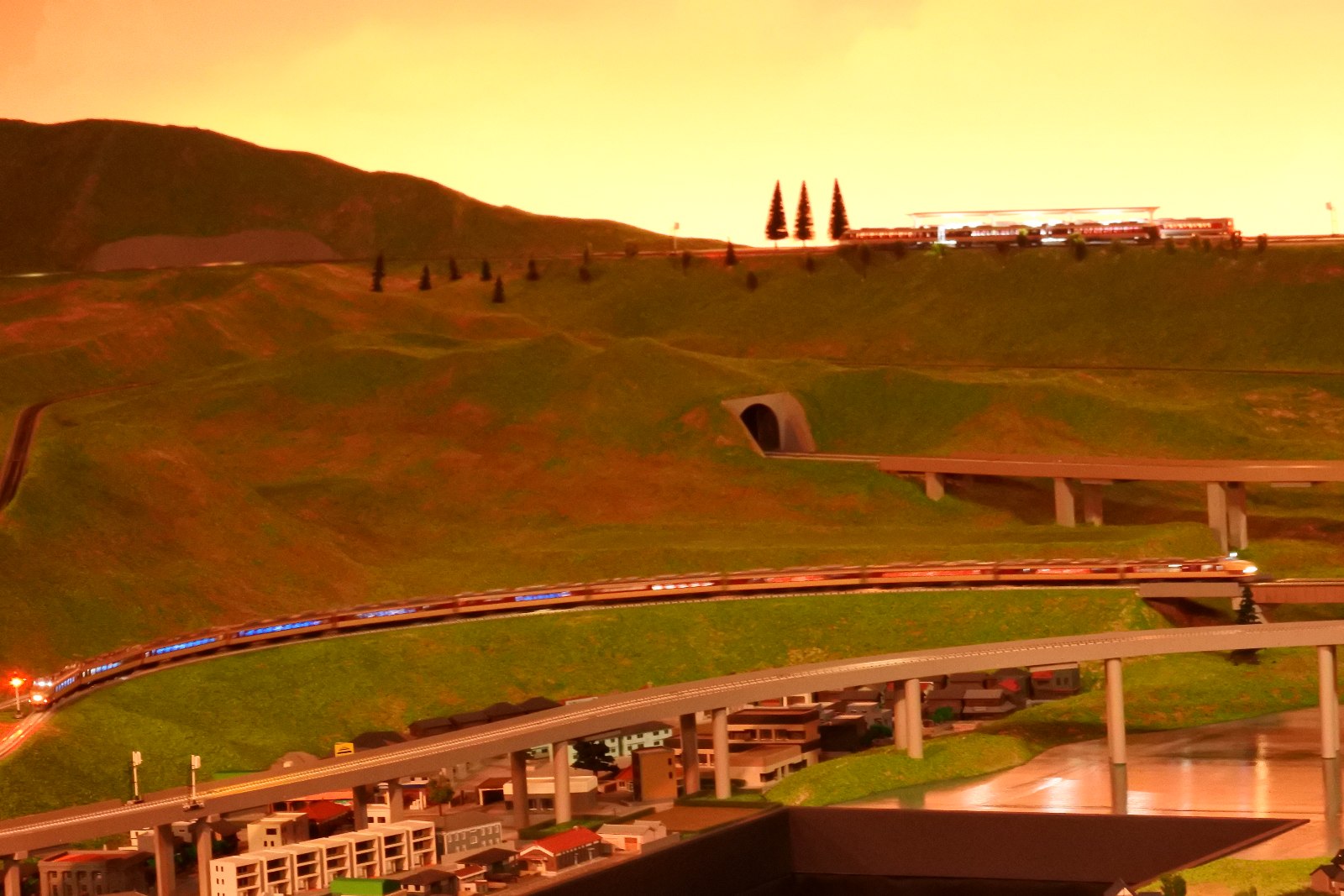 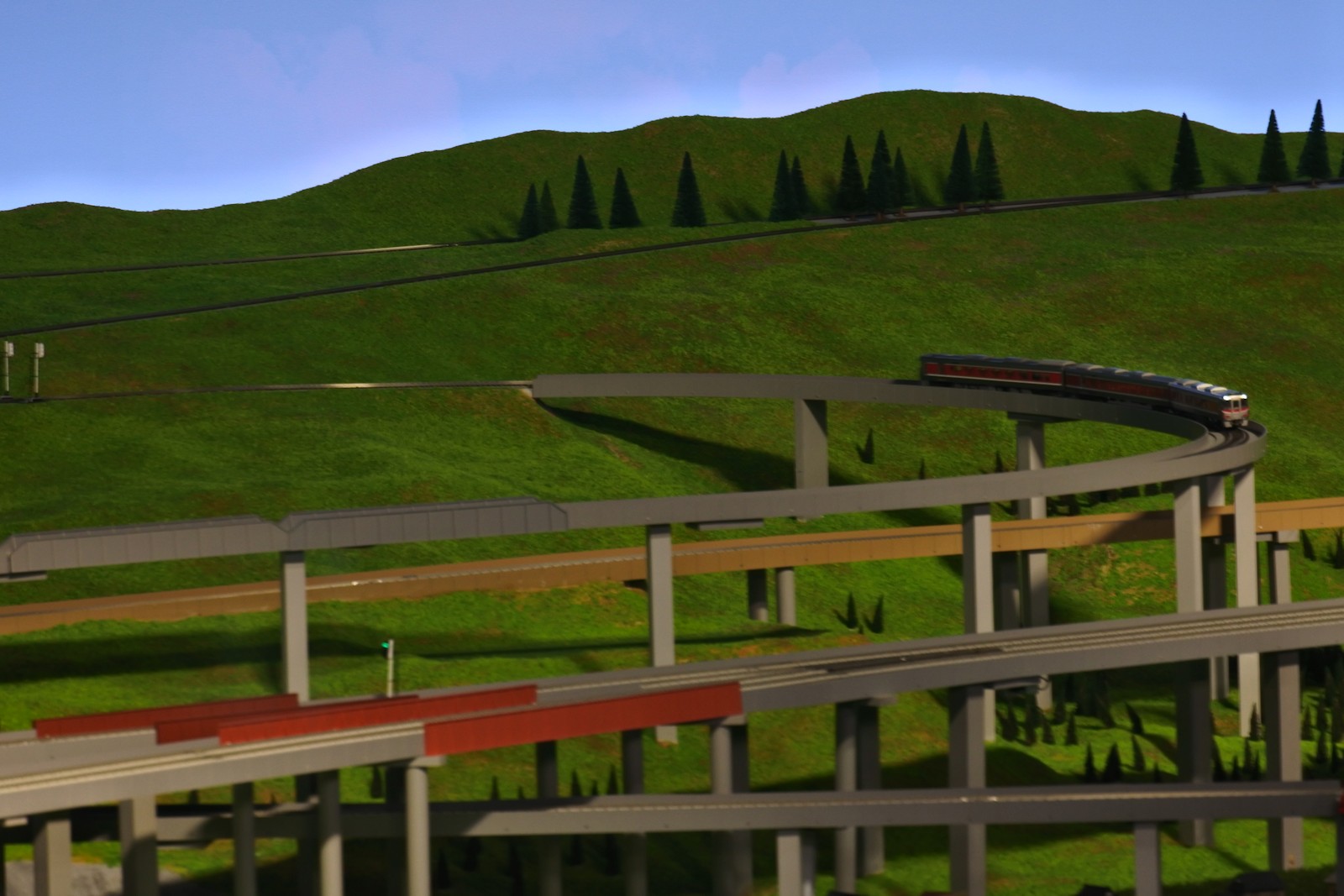 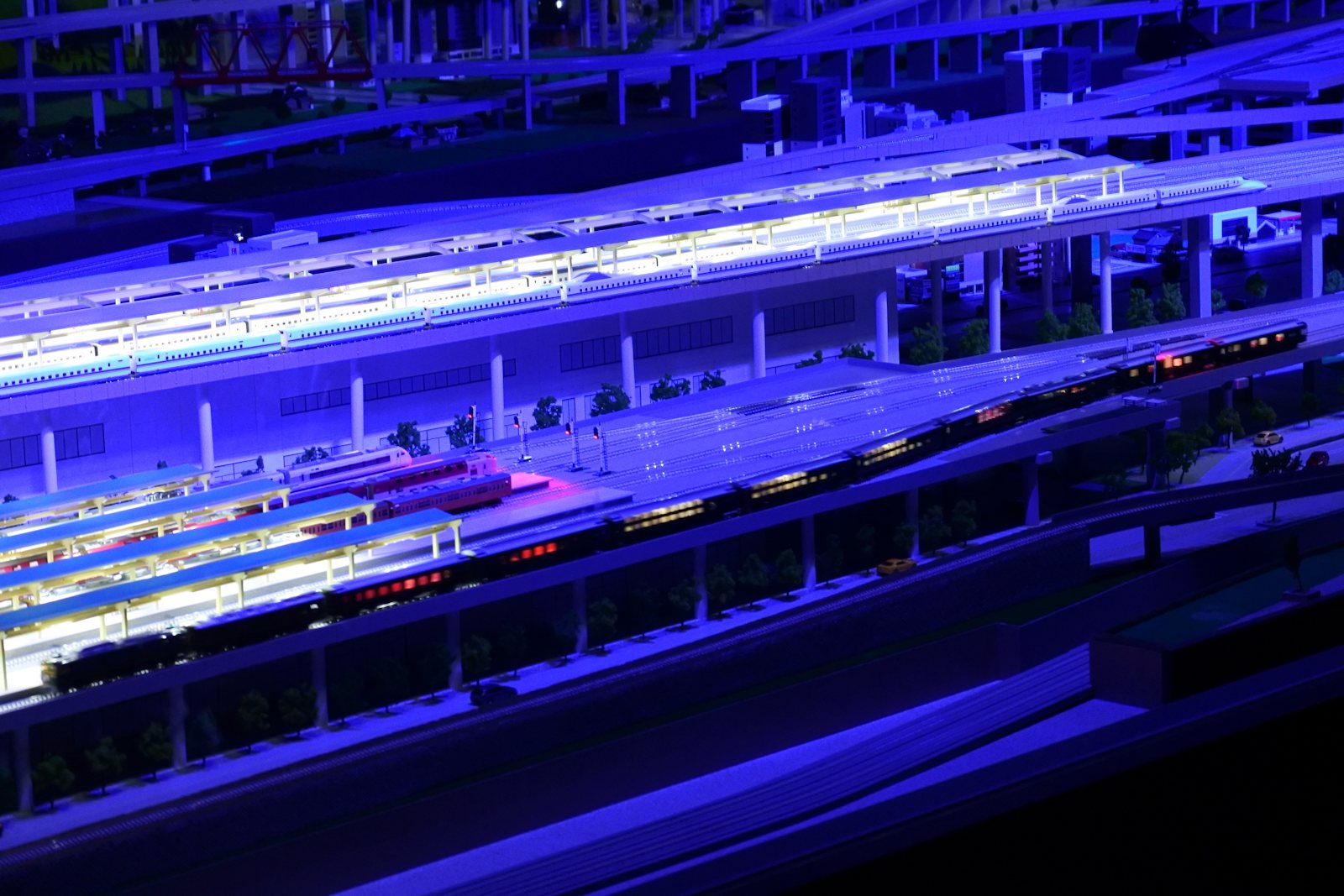 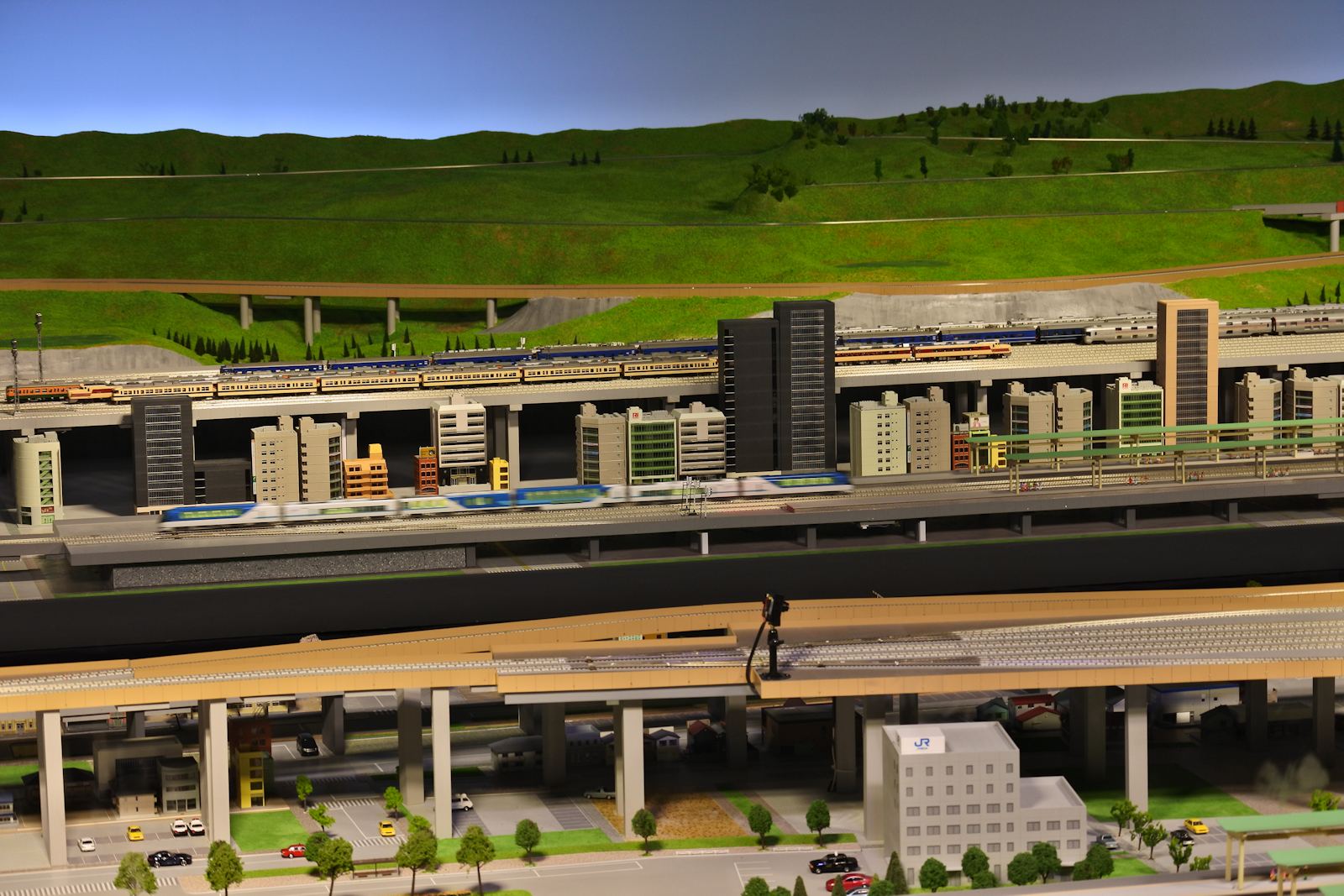 本館2階から外へ。連絡デッキへと出てみると、京都鉄道博物館の最大の見所と言うべき梅小路蒸気機関車館時代から続く20両もの蒸気機関車と、その蒸気機関車達の我が家とも言うべき扇形機関庫が左に見えた。これほどの数のSLが一度に見られる場所は、今やこの京都鉄道博物館だけと言ってよいであろう。 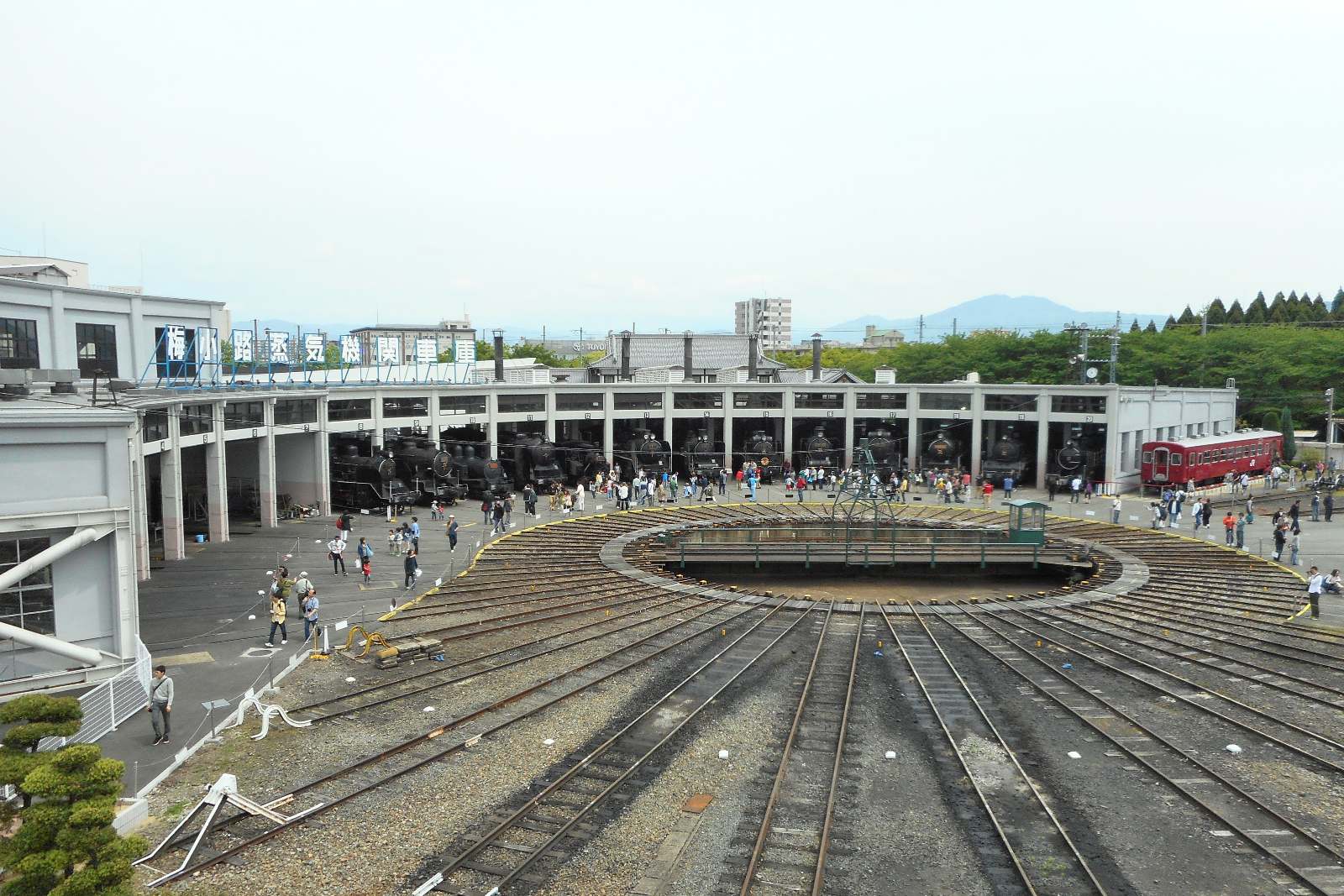 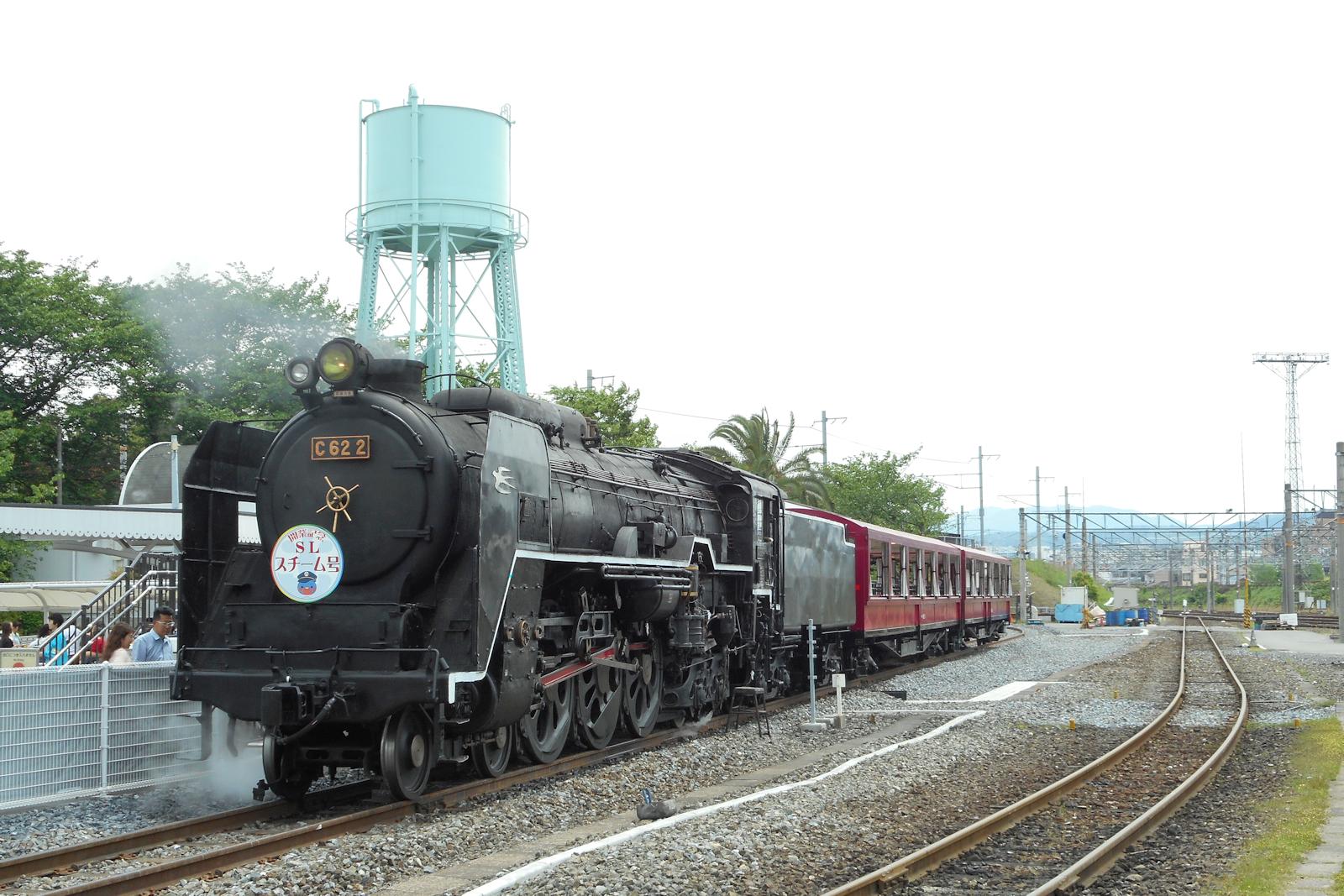 その内のC62形2号機は、博物館内の線路で、実際に客車を牽引して走っている。 「スチーム号」と名付けられた列車は、2両編成の客車を連結している。博物館の入館料とは別に追加で乗車券を買う必要があるが、本物のSLが牽引・推進する列車に乗ってきた。列車は梅小路公園と山陰本線の間の専用線を1往復、乗車時間は15分程。行きはSLが後ろから押す推進運転、帰りはSLが先頭に立つ。 実際に乗ってみると、隣には東海道本線(JR京都線)や山陰本線(嵯峨野線)の営業運転中の列車が走り、館内の専用線とは思えない車窓が広がる。 ちなみに客車の座席・化粧板には歴代の国鉄・JRの列車のヘッドマークのイラストが描かれている。 扇形機関庫の反対側、京都貨物駅寄りにはSLの第2検修庫があり、この日はD51形蒸気機関車が点検中だった。  今回初めて訪れて、80系、キハ81系、マロネフ59形、230形蒸気機関車など、ここでしか見ることができない車両達はもちろん、多数のSLを見られるだけでなく動くSLに実際に乗れることも、強く印象に残り、そこが京都鉄道博物館の魅力だと感じた。 Where I visited last on this travel was Kyoto Railway Museum, opened on April 29th, 2016, and located next to Kyoto (Umekoji) Freight Station at the middle of triangle railway consisting of Tokaido Main Line and Sanin Main Line. The museum wasn't completely newly-built, it was the conversion of Umekoji Steam Locomotive Museum (roundhouse) and absorption of Modern Transportation Museum in Osaka. The museum opens at 10:00 AM in the regular season, but during the holidays in April and May, did at 9:00 AM. Because of a holiday and not so many days passing since its open, many people made a line in front of the museum. Entering there, the first carriages I saw were Class C62 steam locomotive, 80 Series, and 0 Series Shinkansen, all of which used to run between Tokyo and Osaka and have memorial records. Class C62 steam locomotive had run 8 hours as "Tsubame" limited express and marked the maximum speed of steam locomotive in Japan (129km/80.1569mi per hour) in 1954 (the individual marked the speed, C62 17, is preserved at SCMAGLEV and Railway Park in Nagoya). It also known as the model of "The Galaxy Express 999" appearing in Leiji Matsumoto's comic. Maronefu 59 Pullman sleeping carriage and Sushi 28 dining carriage were coupled with Class C62. Maronefu 59 Pullman sleeping carriage were built as only for Emperor's brothers, sisters, sons, daughters, or their family members named Maironefu 37290, and renamed several times because of the end of first class seating and stateroom, etc.. Sushi 28 dining carriage was also named different number, Suroshi 38000, first time because second-class (Green Car) seatings used to be laid out in half of it. In later years, it converted to normal class carriage, but it did full dining carriage again and was given the present name when it started to be exhibited at Modern Transportation Museum. 80 Series, known as the first long-distance electric train between Tokyo and Atami or Numazu ("Shonan Densha"), was debuted in 1950. Before its debut, the electric train wasn't suitable for long-distance operation because of its heavy tremor and motors' weight which caused flaw and gall of railway, but it broke this old-fashioned attitude. The exhibited one was the first model having a roundish front with three front glasses. In the later years, the front design changed to the angular one with two glasses, which influenced the one of the carriages that time, such as Tokyu first 5000 Series and Keio 3000 Series, etc.. Its orange and green colour was called "mandarin orange" in Kanto Area, but in Kansai Area it looked like a pumpkin. 0 Series Shinkansen was known as the first railway carriage running at over 200km/124.274mi per hour on the regular operation. In the museum two front, second-class (Green Car) seatings, and half-regular-class seatings and half-buffet carriages. The carriage completely retired in 2008 and exhibited in many railway museums. Its roundish front kept attracting many railfans. Those carriages couldn't go into the interior except one of 0 Series Shinkansen. In 0 Series Shinkansen, the model of the carriage, pantograph, and seating. Going over those carriages, a front carriage of 103 Series was exhibited, and the visitors were also allowed to go into and watch its interior. The exhibited carriage was the first built one of 103 Series in 1963, which started to run on Yamanote Line at first. Before the announcement of the exhibition, it was in service on Hanwa Line coloured by sky-blue. However, it was orange-colour in the museum and the interior refurbished. Going into the main building, I saw 500 Series Shinkansen, 583 Series, and 489 Series on my left, and Class 230 steam locomotive on my right. 500 Series Shinkansen debuted in 1997 and was first Shinkansen carriage running at 300km/186.411mi per hour on regular operation. It took less than 5 hours between Tokyo and Hakata. Its sharp front and roundish cross-section surface was designed by Alexander Neumeister. Though it was retired from "Nozomi" service by appearance of N700 Series, but some sets were shortened to 8-carriage set and still be in service as "Kodama" between Shin-osaka and Hakata. 583 Series and 489 Series was available on all electrified Japan National Railway (also privatised JR) lines and had run as many limited express trains all over Japan. 583 Series had been in service as "Kitaguni" express between Osaka and Niigata, and 489 Series as "Noto" express 583 Series was manufactured as the first carriage equipping non-reclining transverse seatings convertible to sleeper with double- or triple-decker bed. Notable operations by 583 Series were "Hatsukari" and "Michinoku" between Ueno and Aomori, and "Raicho" between Osaka and Toyama in the daytime, and "Gekko" between Shin-osaka and Hakata, and "Yuuzuru" and "Hakutsuru" between Ueno and Aomori in the night time. 489 Series was improved version of 485 Series available to couple with Class EF63 electric locomotive to run on steep between Yokokawa and Karuizawa on Shinetsu Main Line, which was closed in 1997. It used to be mainly in service as "Hakusan" and "Asama" limited express passing the steep. Class 230 was the first made-in-Japan steam locomotive built in 1902. The same specification models were done for Koya Railway (present Nankai Koya Line) and Tojo Railway (present Tobu Tojo Line). The exhibited one, 233, was built in 1903 and designated as Railway Memorials, Mechanical Engineering Heritages, and important cultural properties. On the left of 500 Series Shinkansen, 18 front signs of National Railway and JR's express or limited express trains. Over those, Class EF66 electric locomotive, Class DD51 diesel locomotive, Kiha 81 Series, and 100 Series Shinkansen were seen. 100 Series Shinkansen had been in service from 1985 and 2012. It has sharp front, double-decker dining and second-class carriages (Green Car), and operated at 230km/142.915mi per hour, faster than 10km/6.21371mi per hour. It can be said that these equipments improved Shinkansen more attractive. Especially, the set coupling four double-decker carriages belonging to JR West enjoyed high popularity. In the later years, it was shortened to 4-carriage or 6-carriage without double-deckers. Kiha 81 Series debuted in 1960 as "Hatsukari" limited express between Ueno and Aomori via Joban Line and Tohoku Main Line. It has characteristic nose different from that of 151 Series and 485 and 489 Series, which was nicknamed "bull dog" among railfans. It sometimes caused engine troubles, which triggered a fire. On that time, the newspaper said that it might be like a trablemaker. However, the models after it, such as Kiha 82 Series and Kiha 181 Series, improved the faults and spread the network of limited express trains to unelectrified lines. Kiha 81 Series was only exhibited there. It was one of the carriages I would like to see so much. Going up the 2nd floor, one of the highlights was the model train diorama, on which those of the exhibited carriages, JR West's popular carriages, and some other railway companies' carriages. Going out of the main building from the first/second floor, I saw the best attraction of the museum, the twenty steam locomotives in the roundhouse on my left. It must be said that where people could see such a large number of steam locomotives at once was only there. One of the 20 steam locomotives, Class C62 2, hauling and pushing two passenger carriages on the dedicated railway in parallel with Tokaido Main Line and Sanin Main Line and the train named "Steam". Tough additional fee was needed to ride, I rode on it. It took about 15 minutes going back and forth. As riding on the train, it wasn't like a in a museum or a park because the trains on regular operation passed. In addition, the patterns of old front signs on seatings and interior panel. Maintenance factory for steam locomotives stood opposite to the roundhouse. On that day a Class D51 was under maintenance. It was really impressive for me to not only see many carriages exhibited only there such as 80 Series, Kiha 81 Series, Maronefu 59, and Class 230, but the steam locomotives in the engine house including the one running condition, on which I also could rode. お気に入りの記事を「いいね!」で応援しよう
最終更新日
May 6, 2019 03:34:08 PM
コメント(0) | コメントを書く
[鉄道旅の記録] カテゴリの最新記事
|